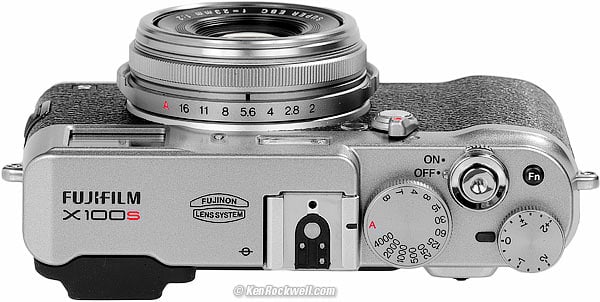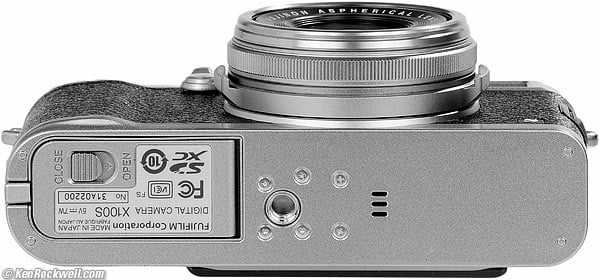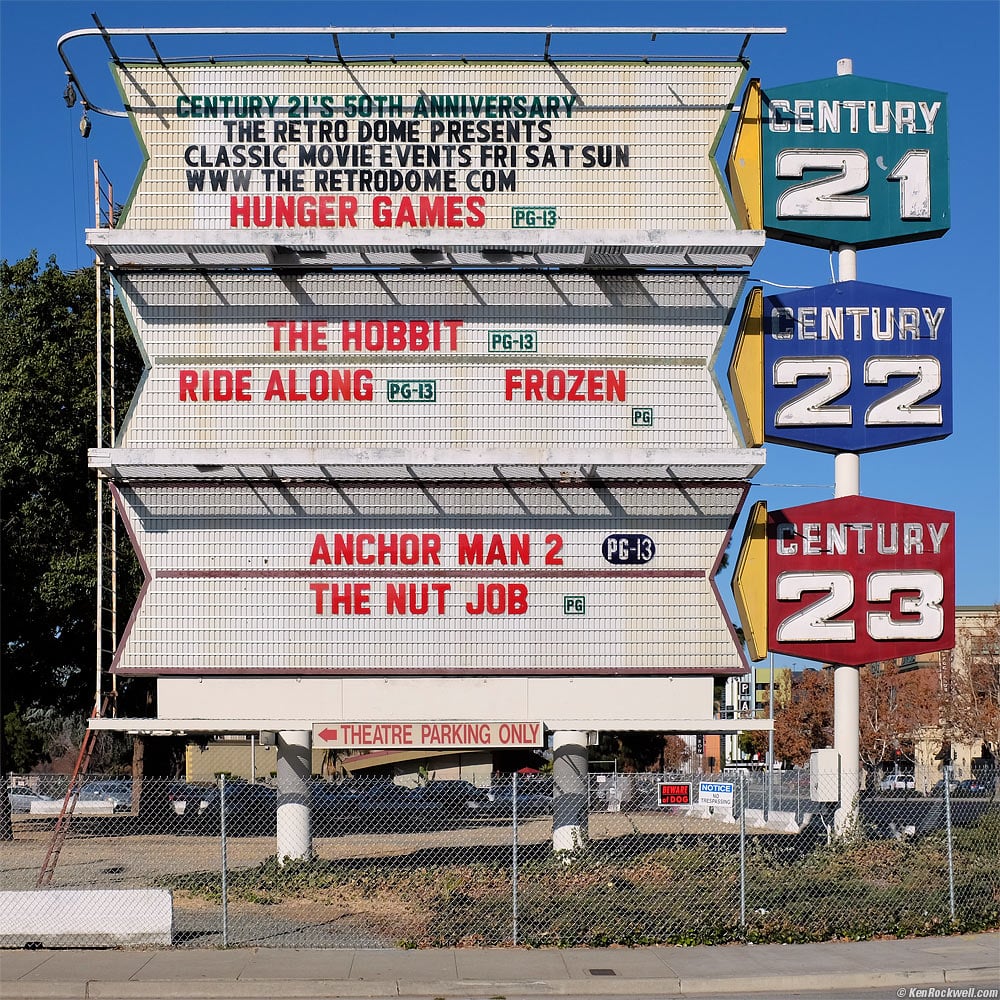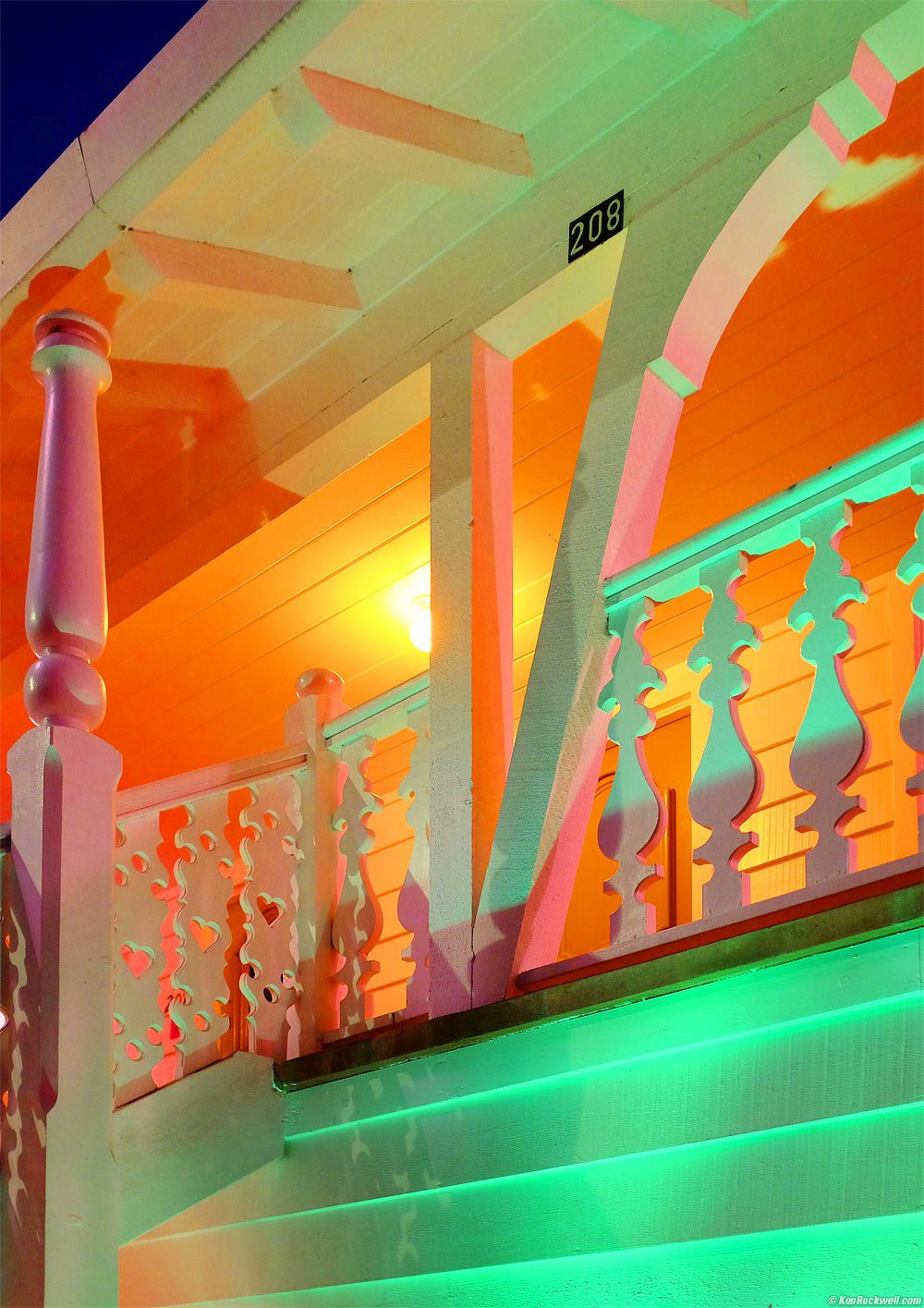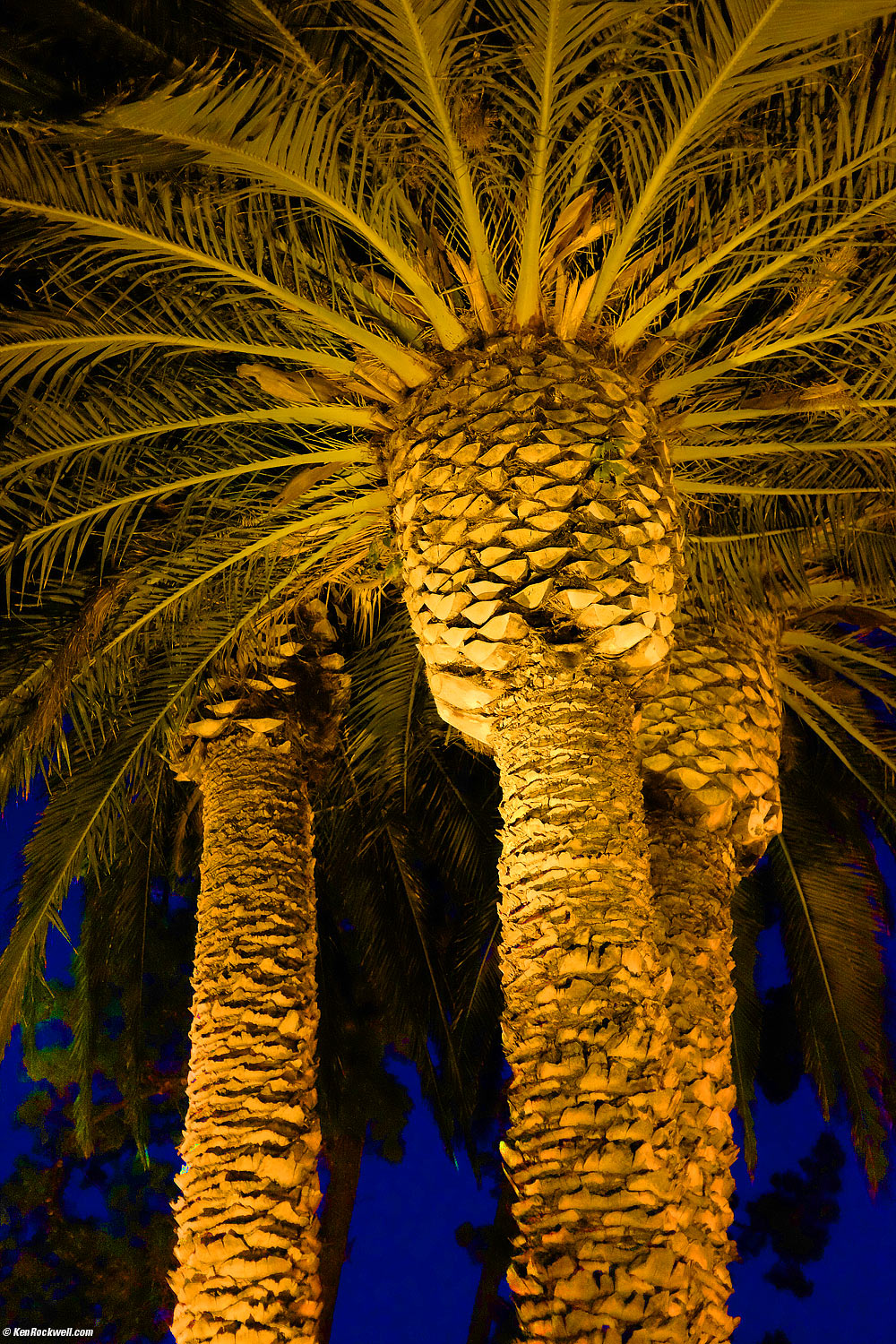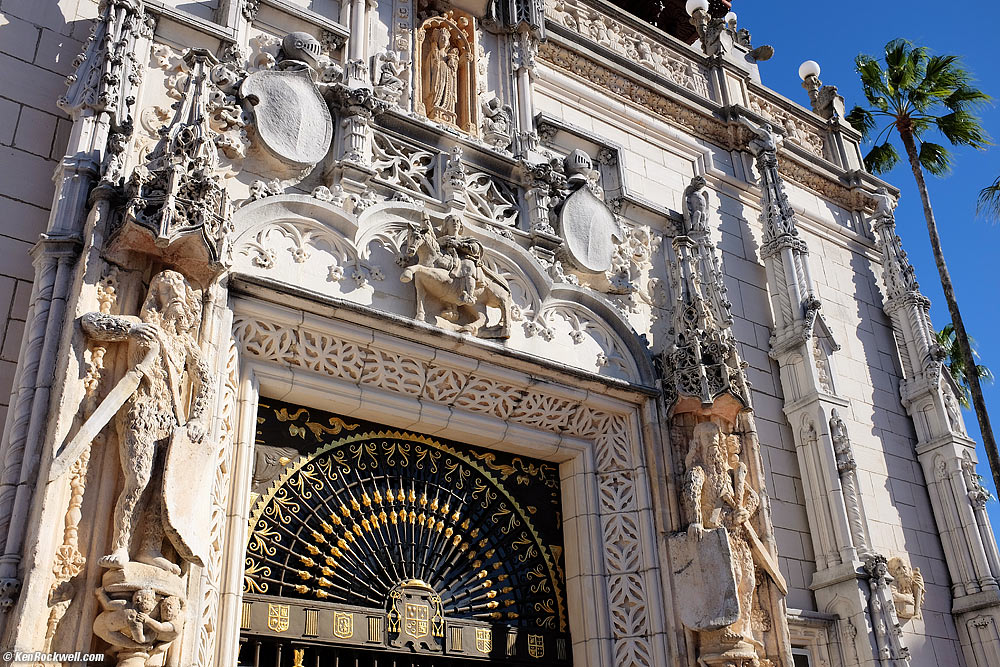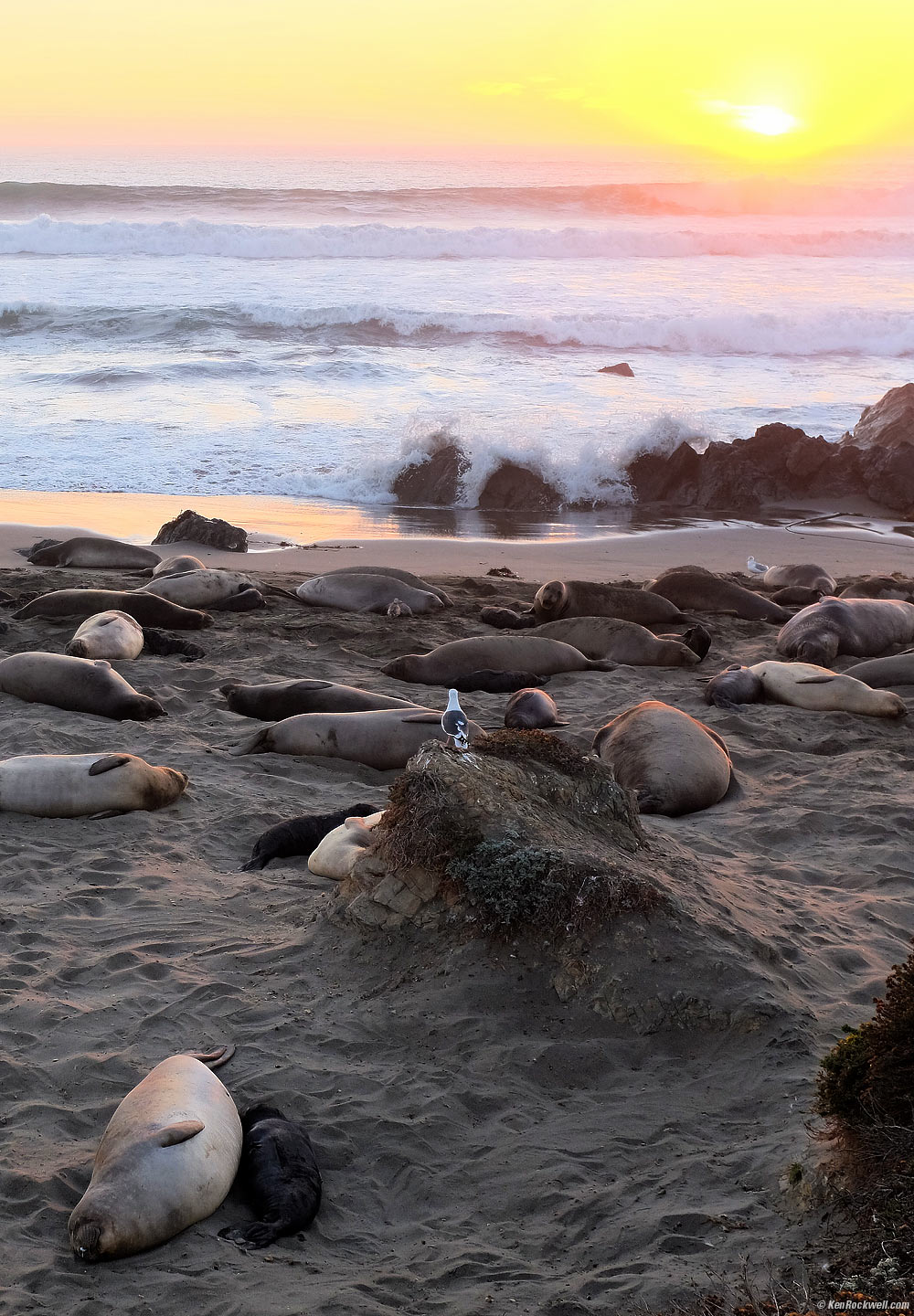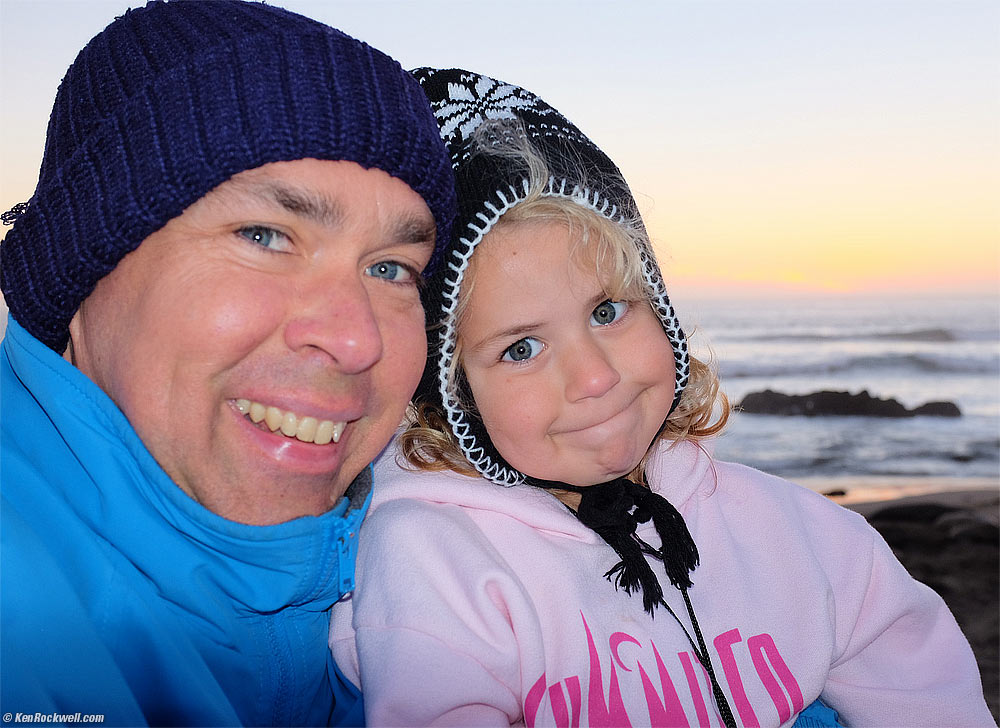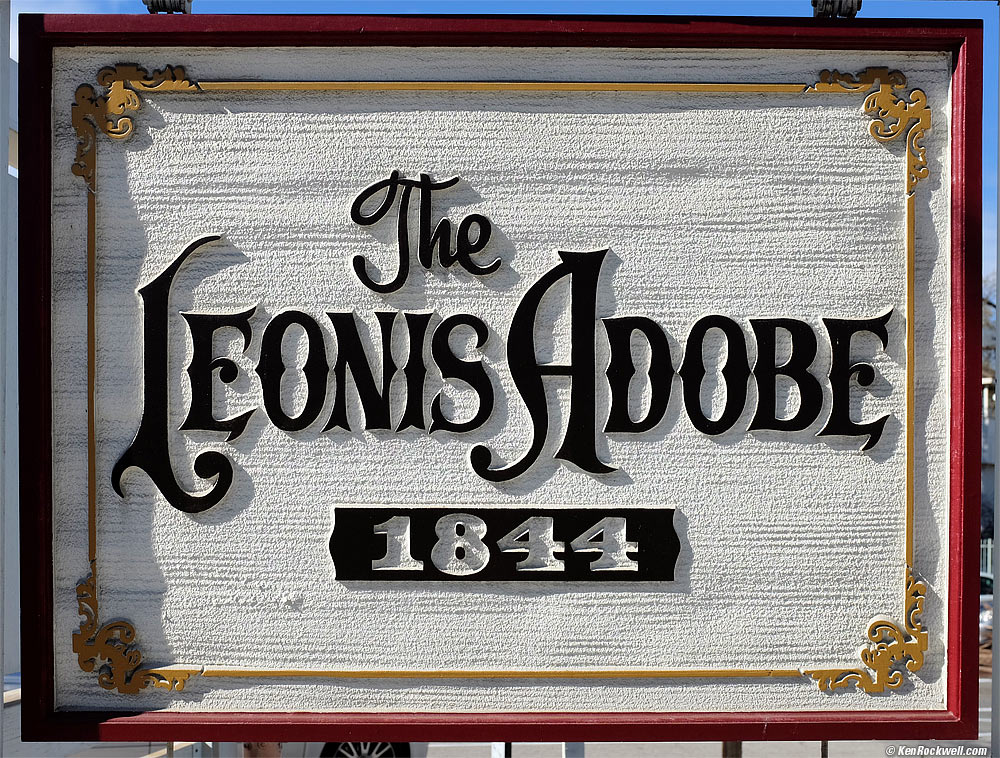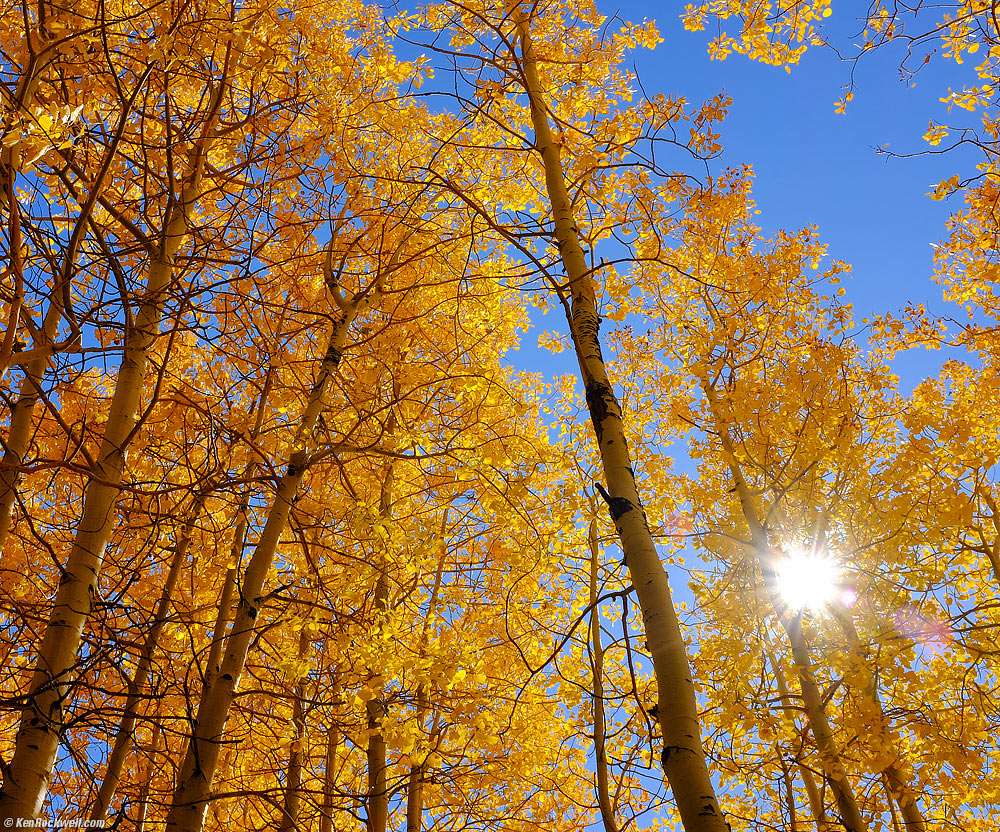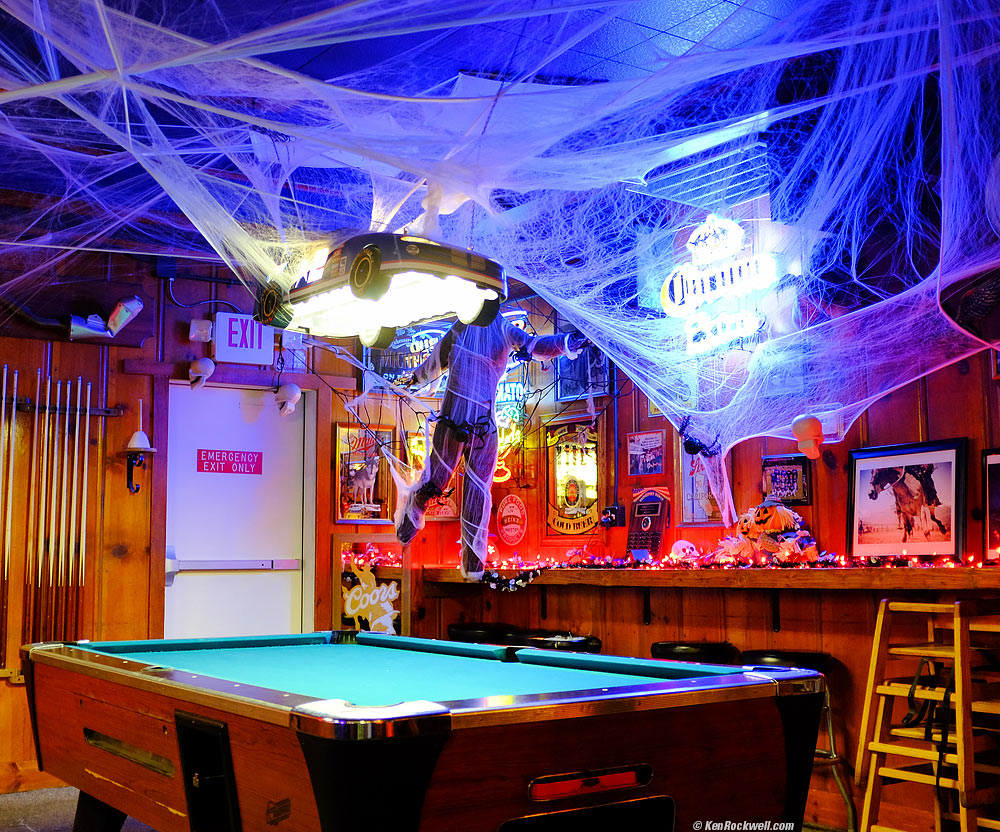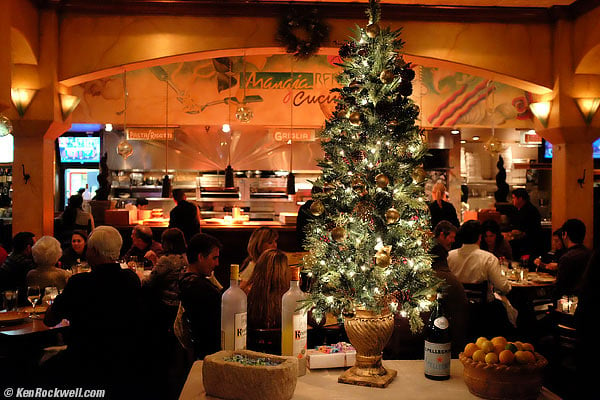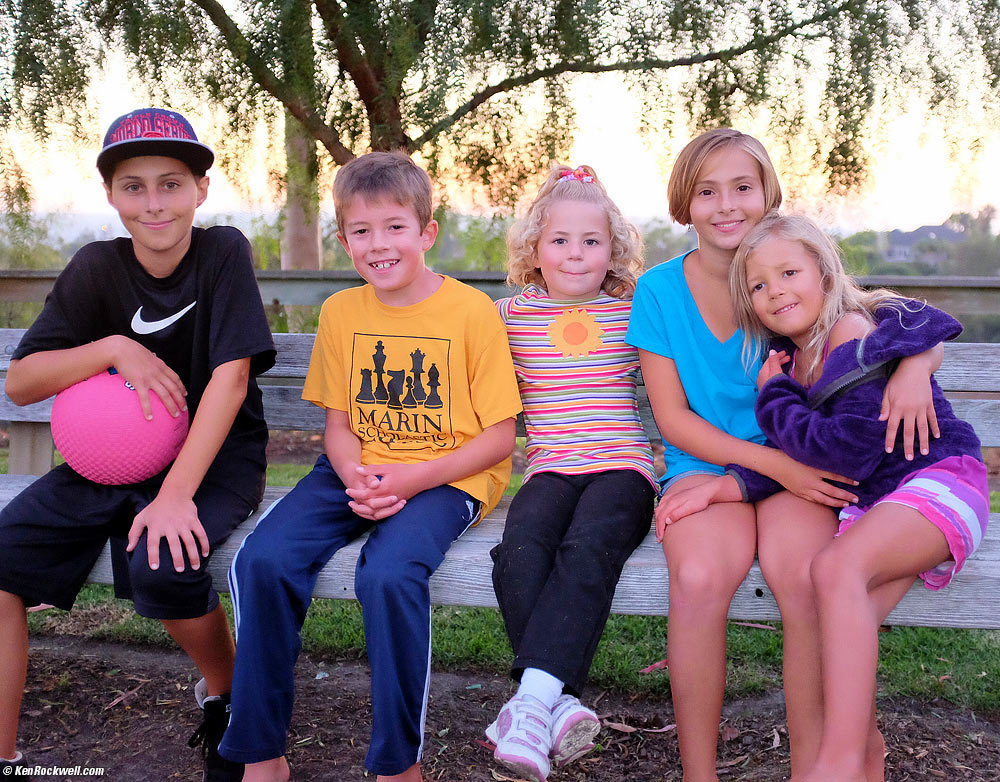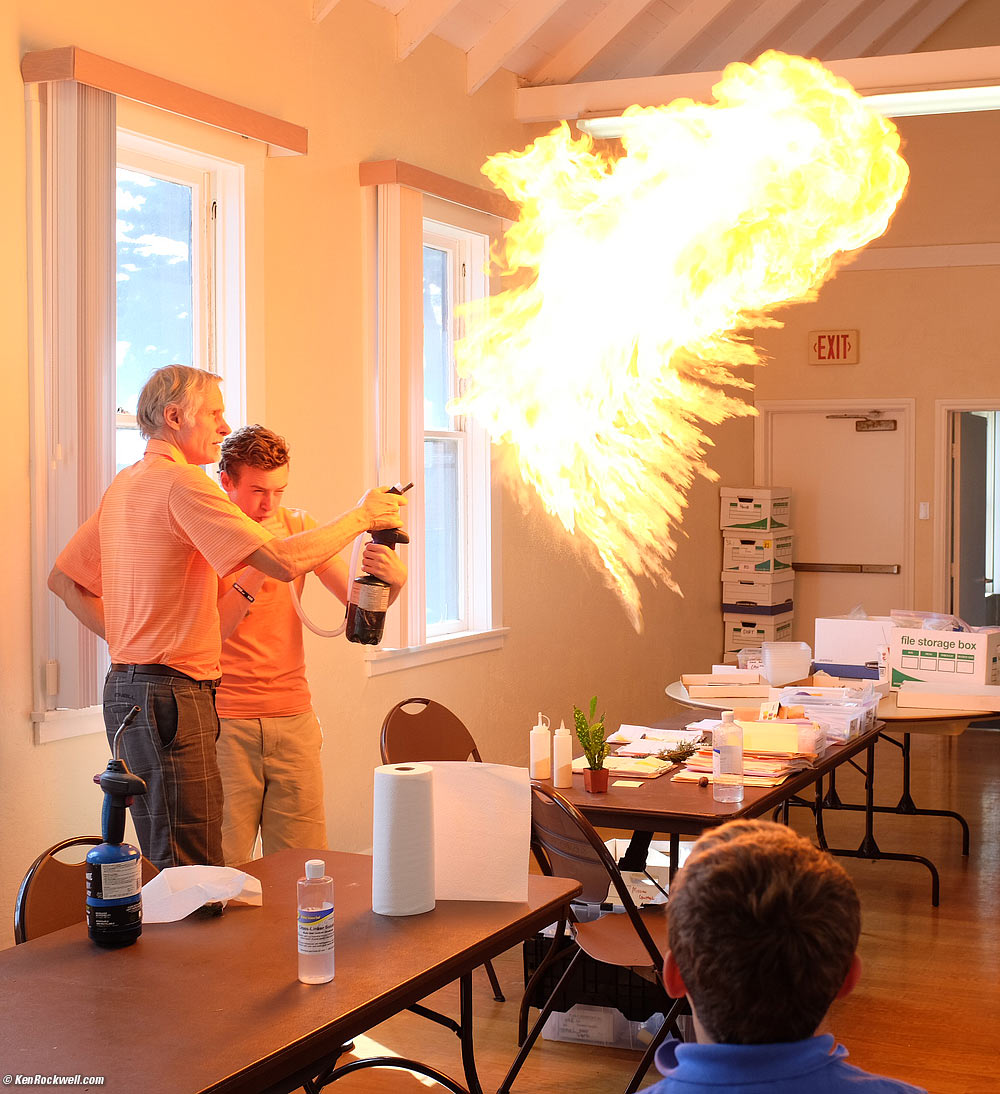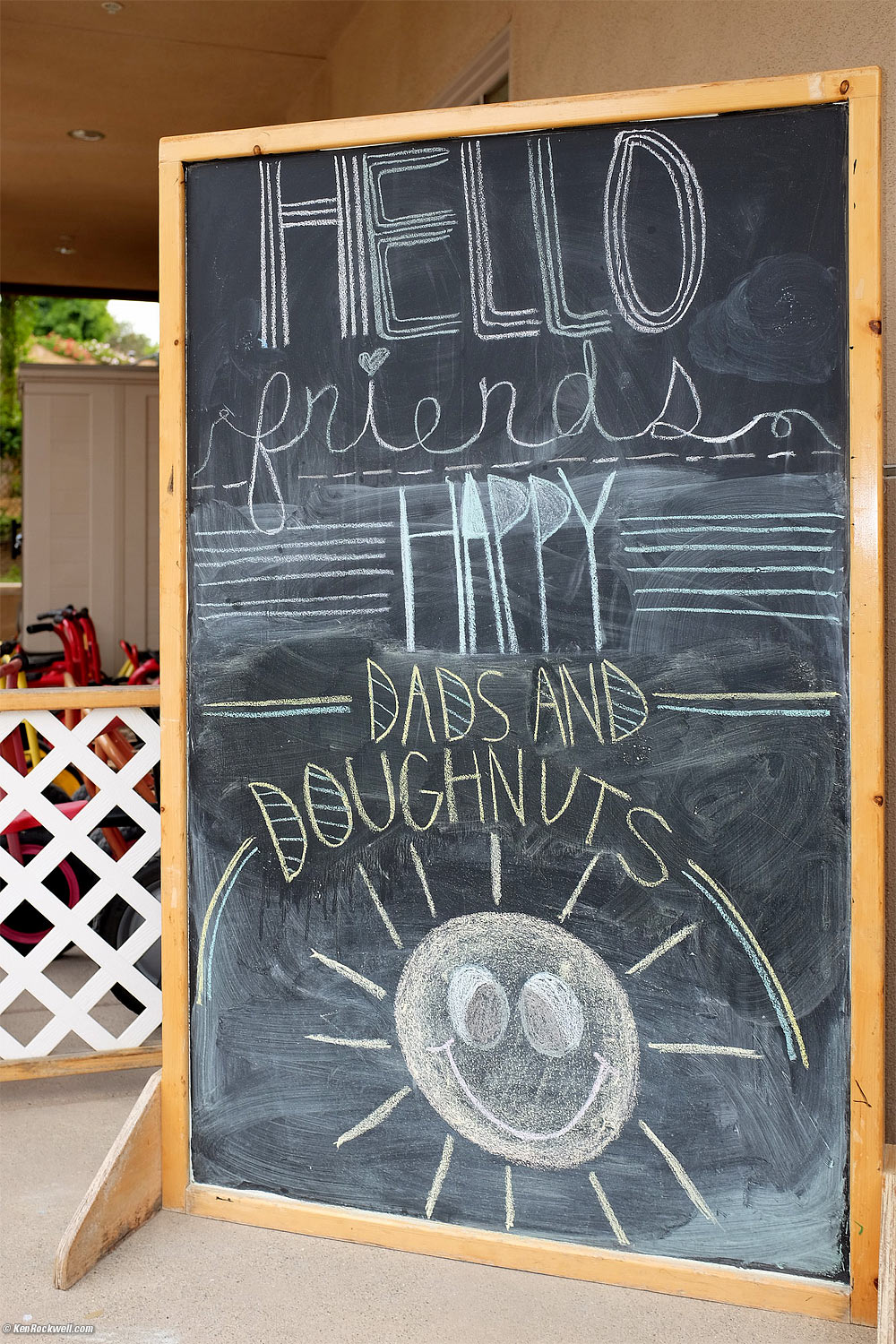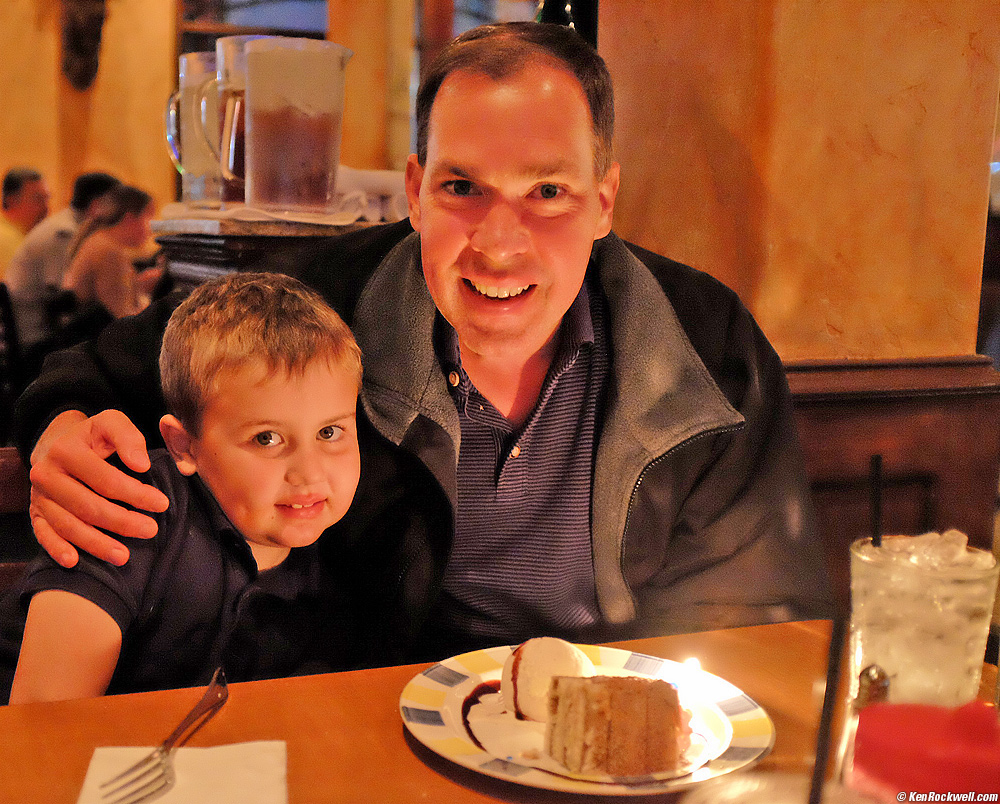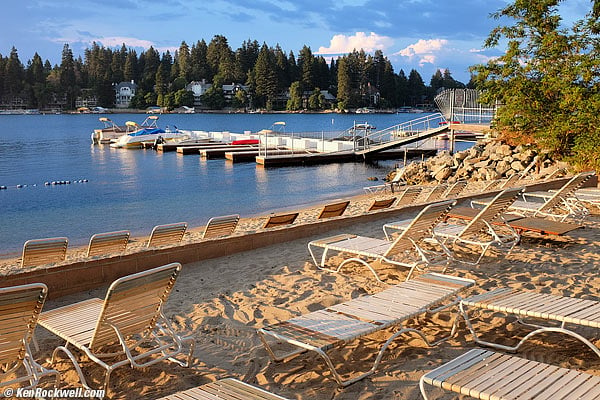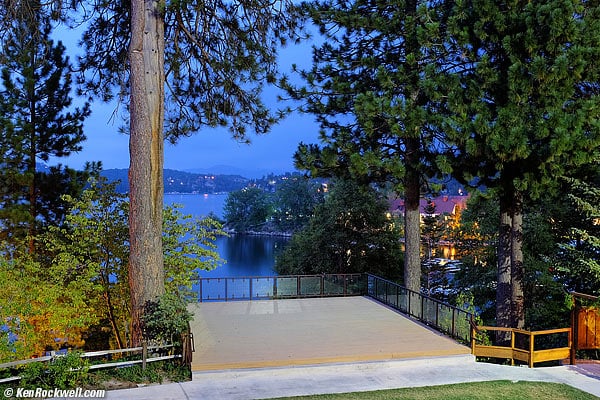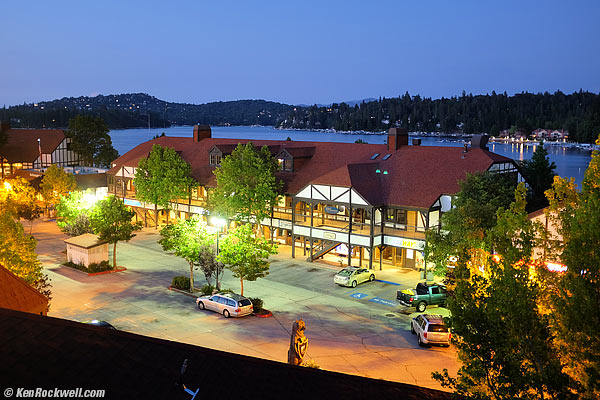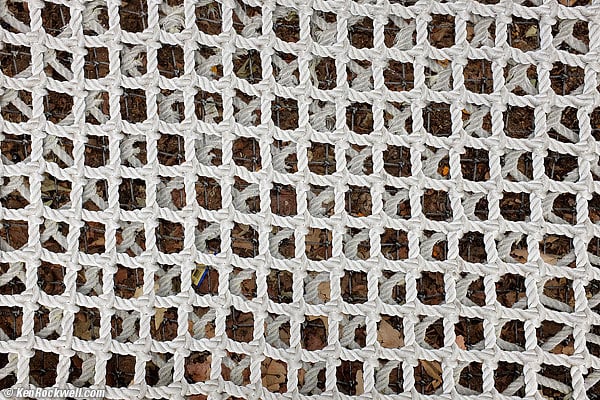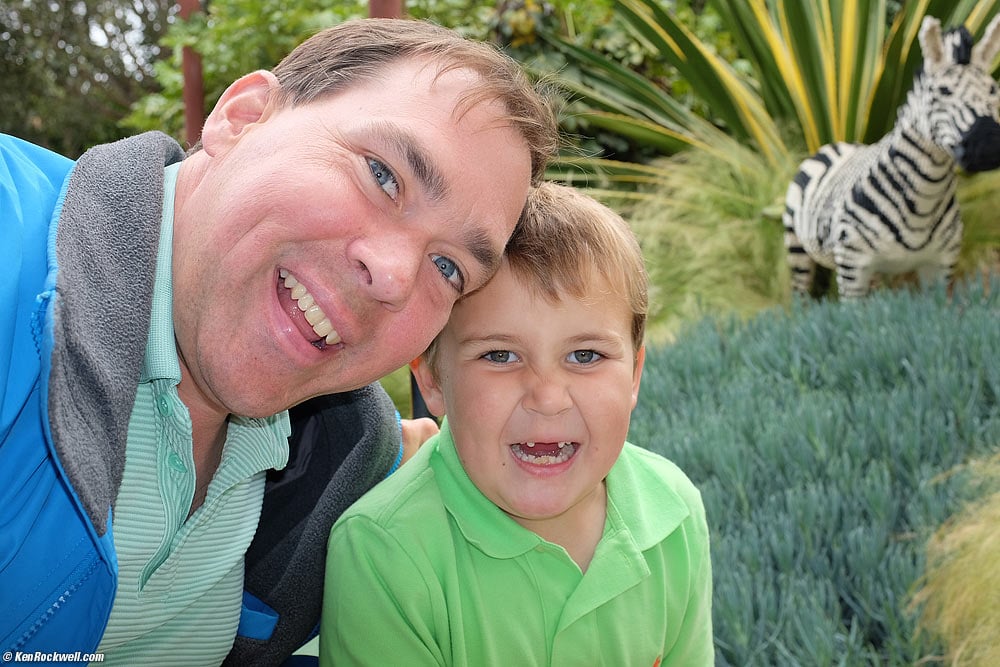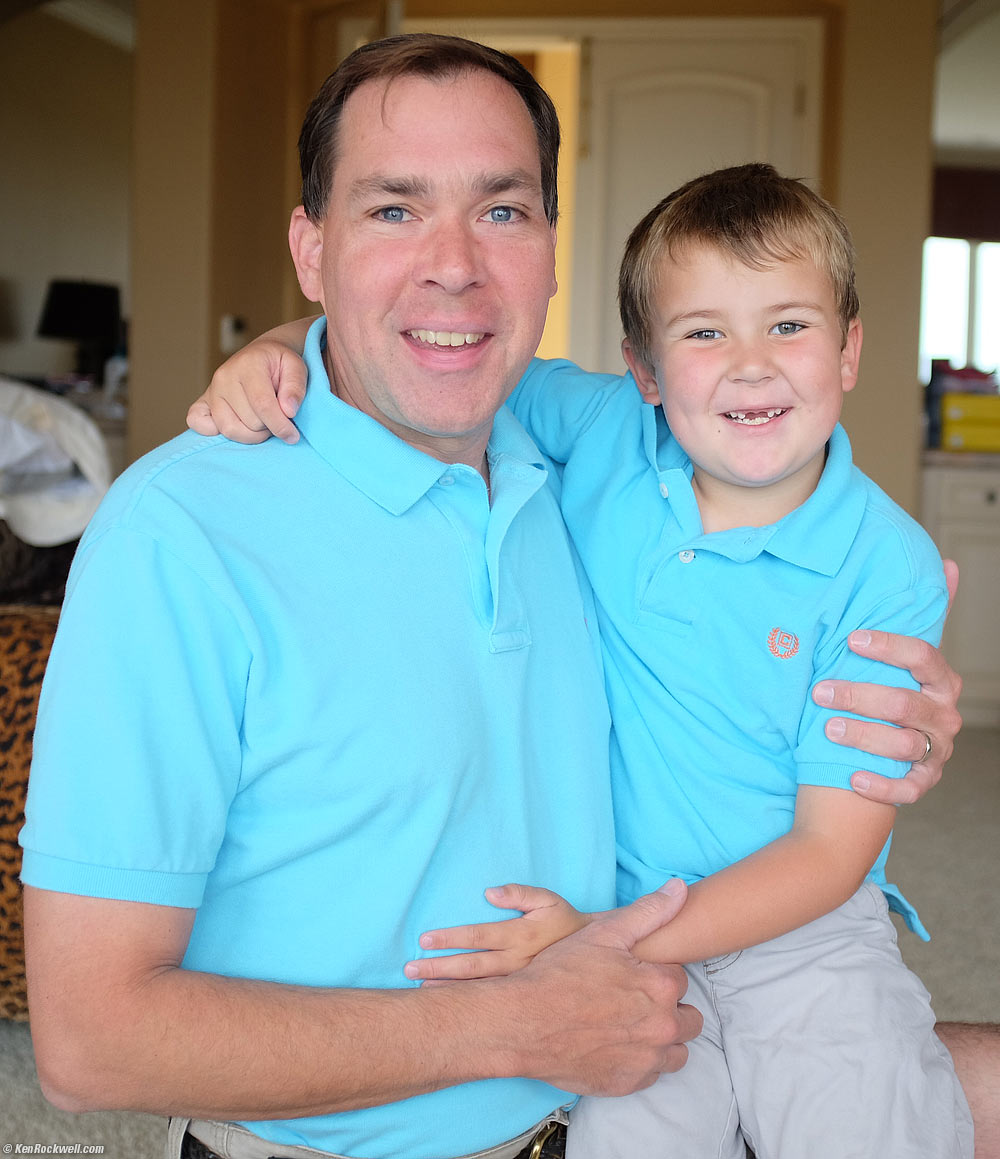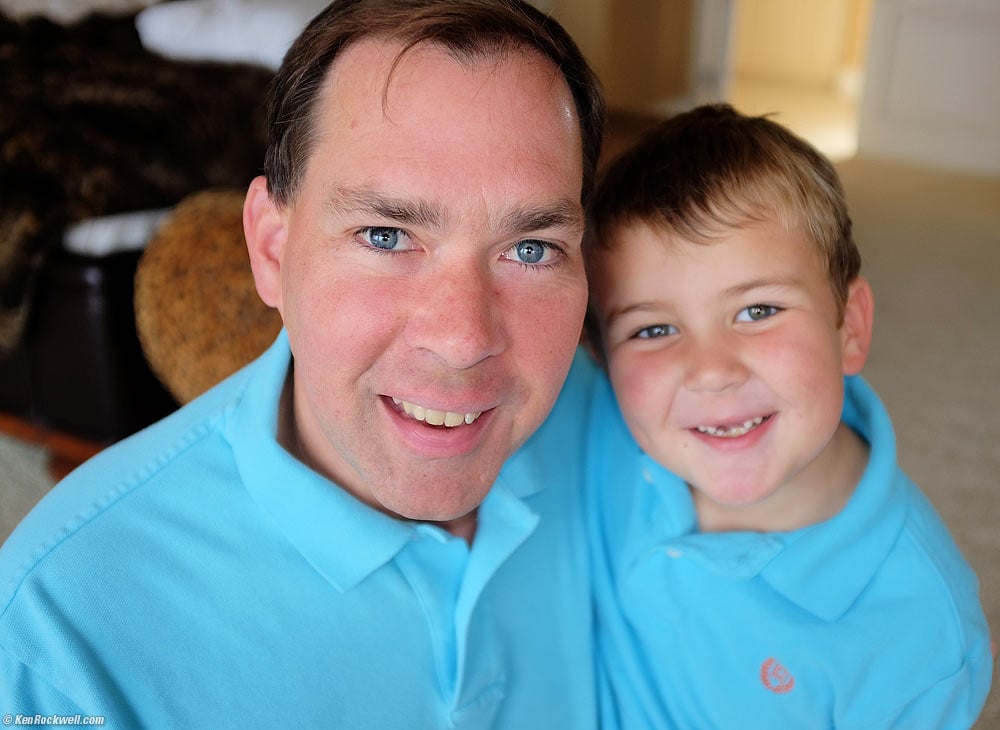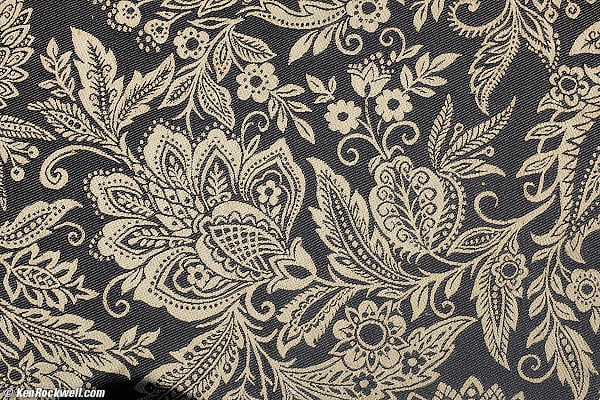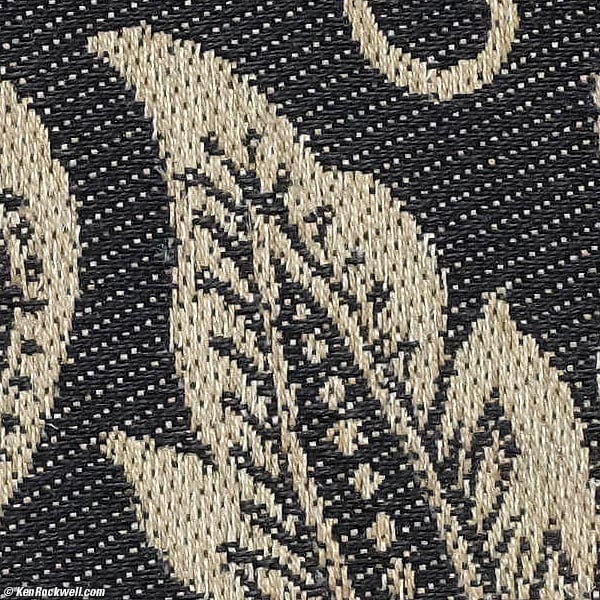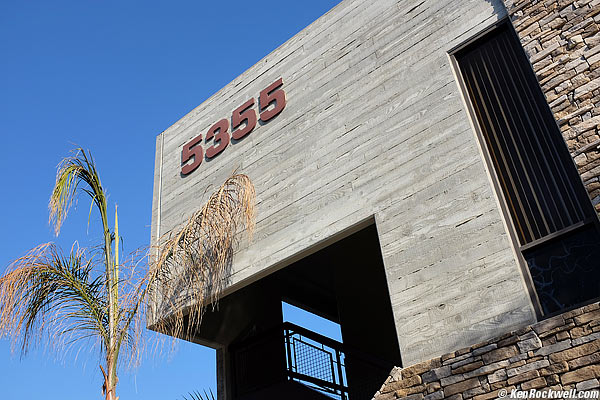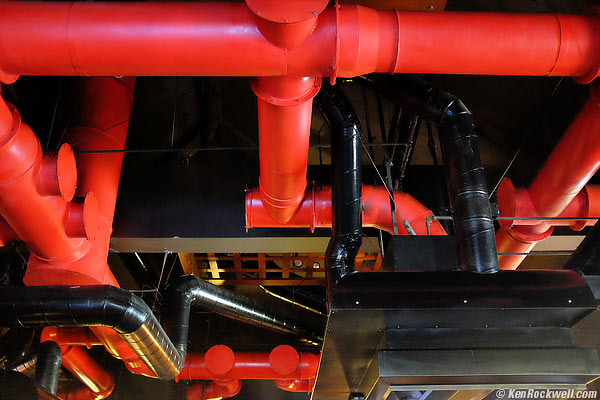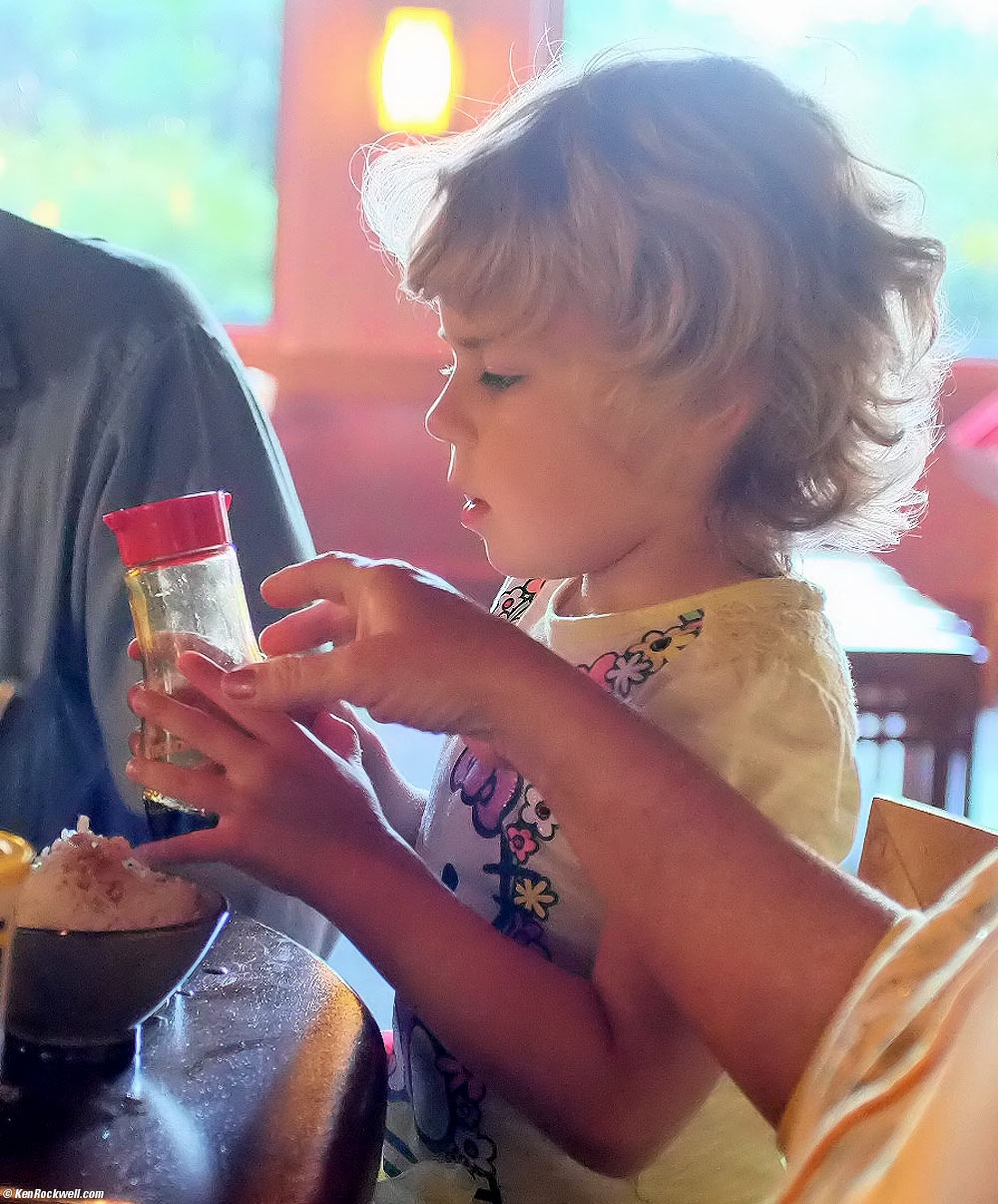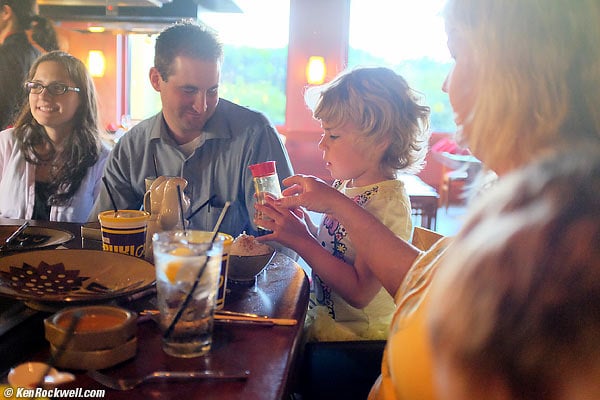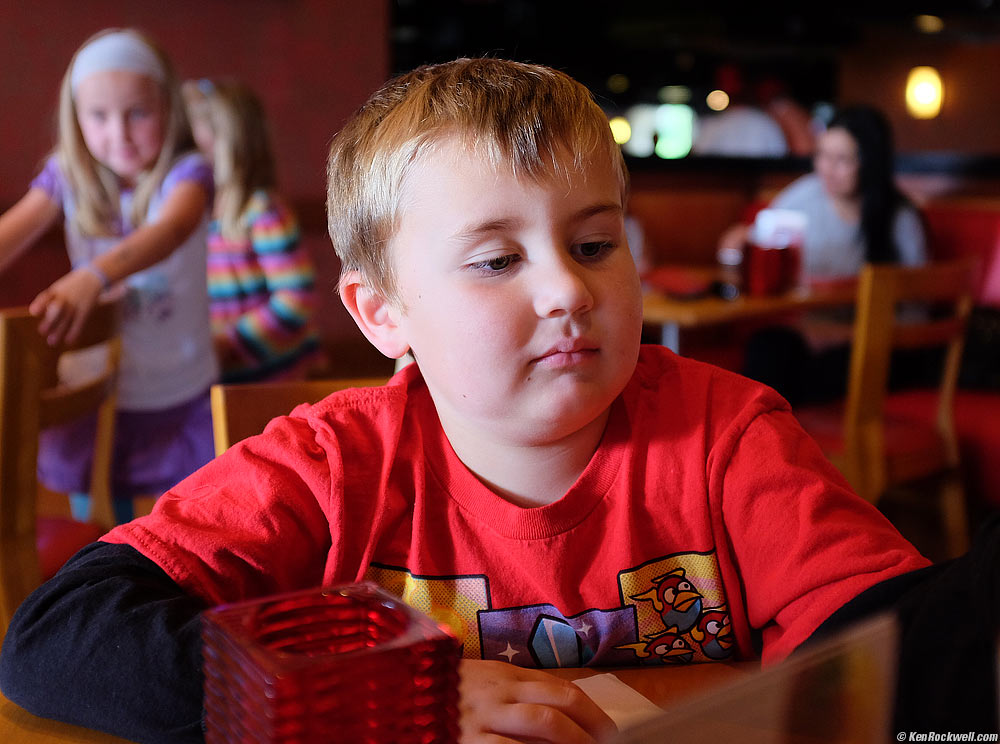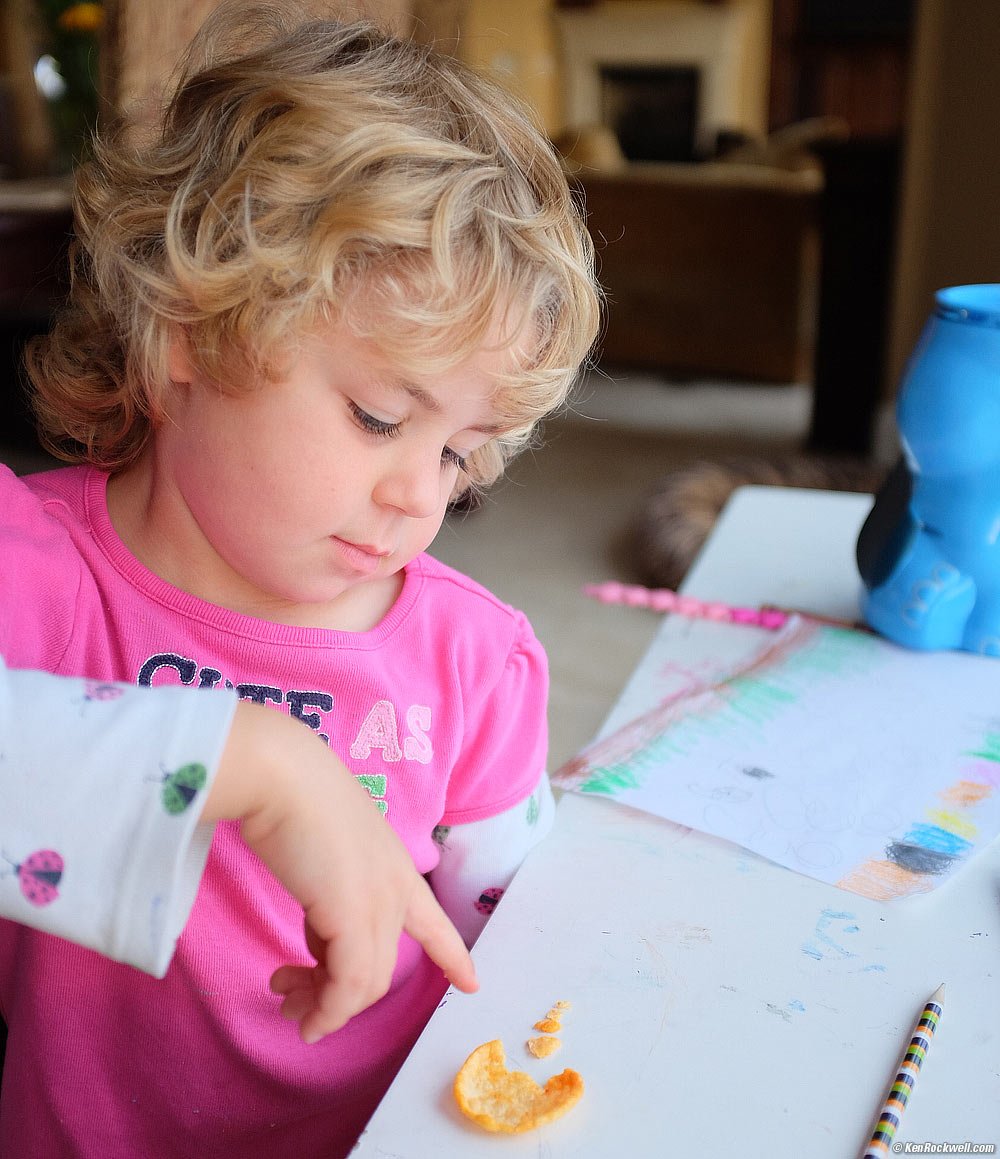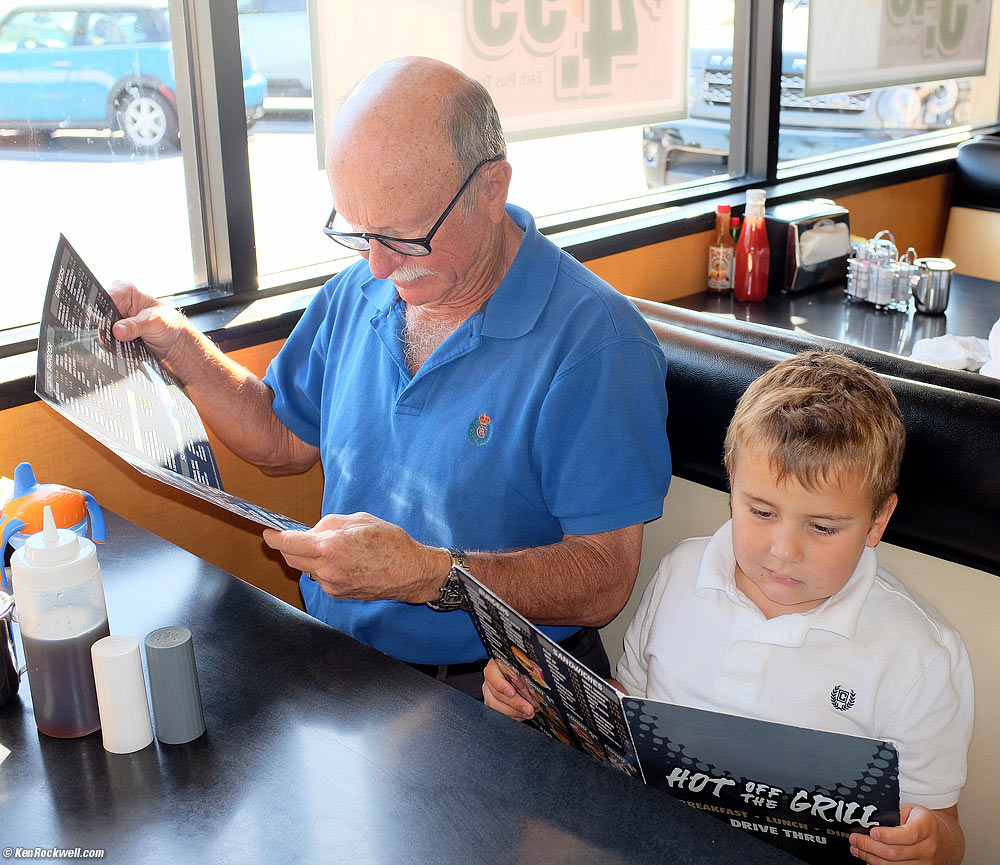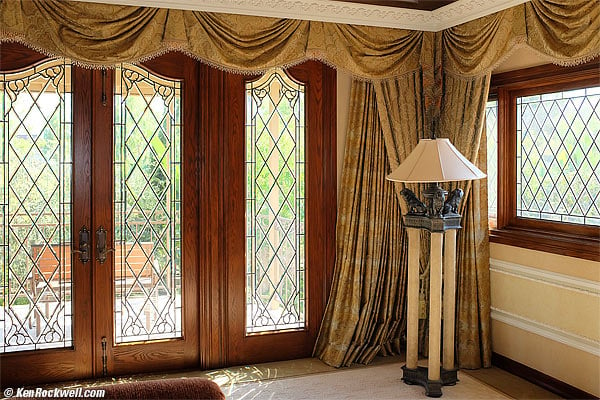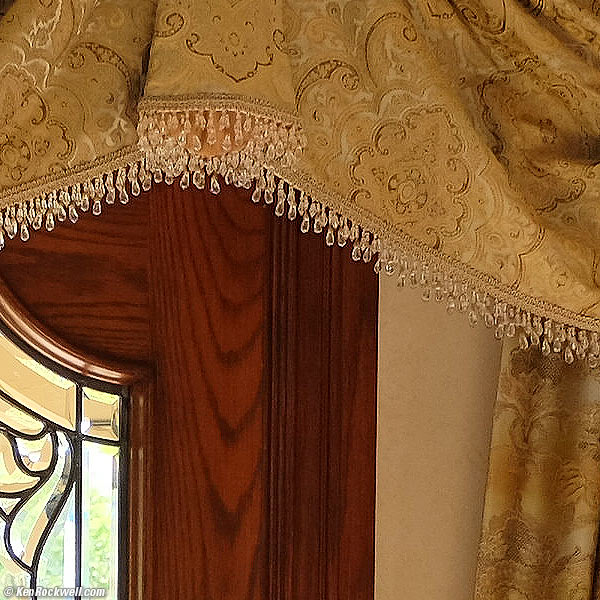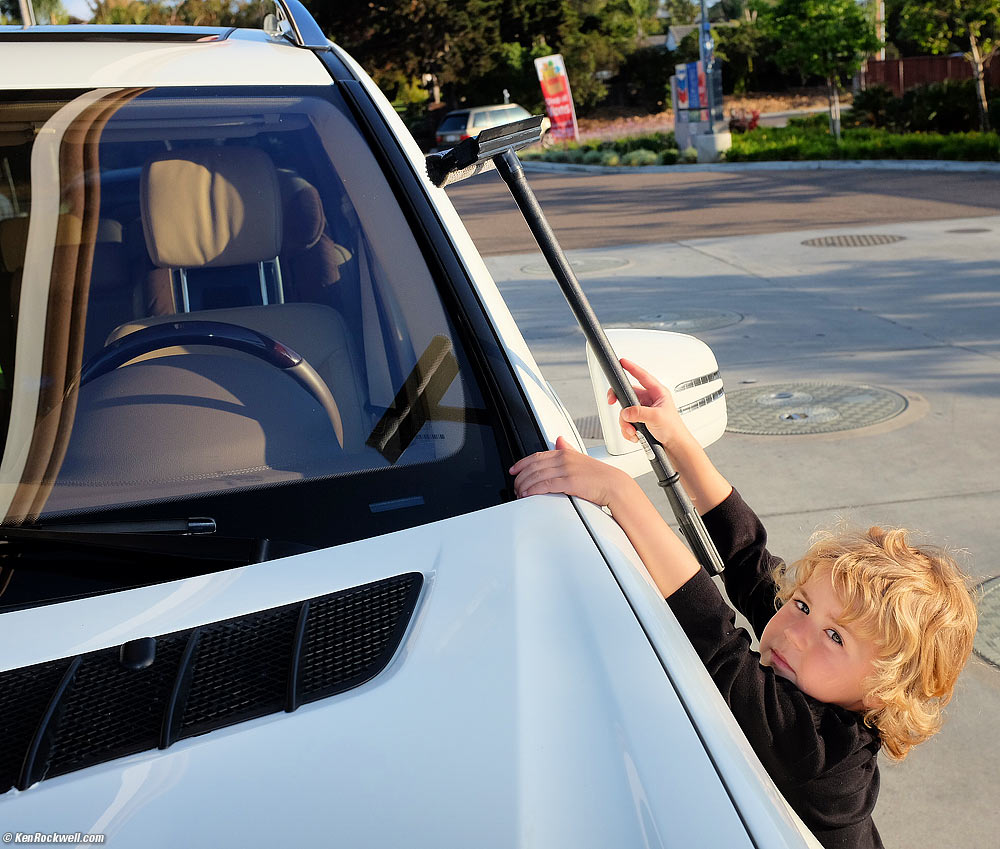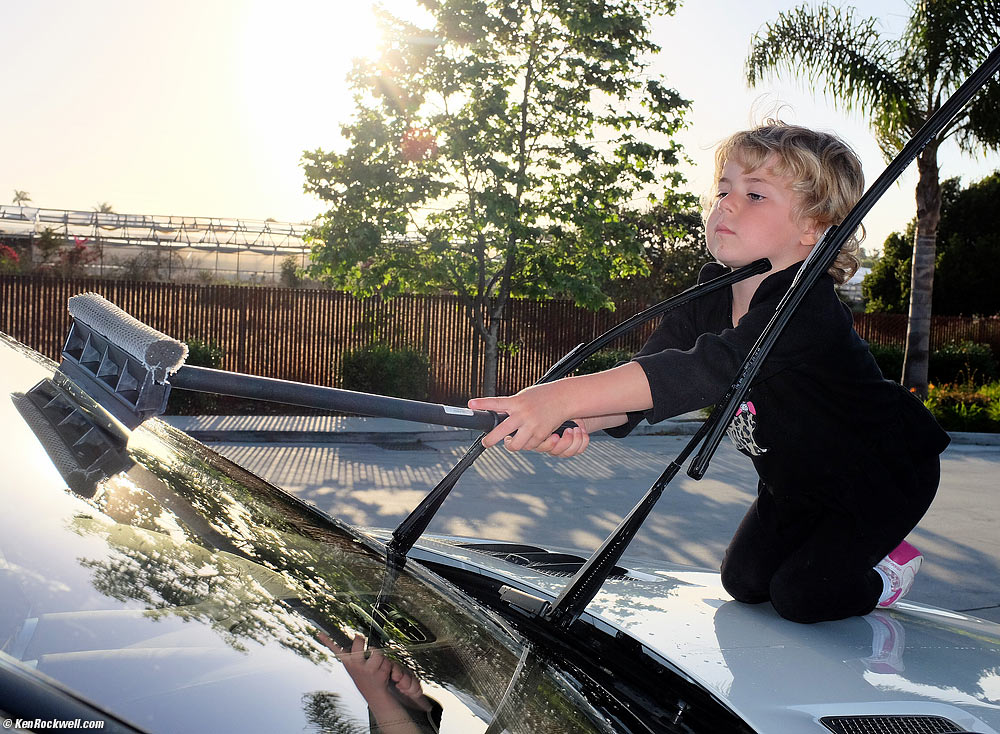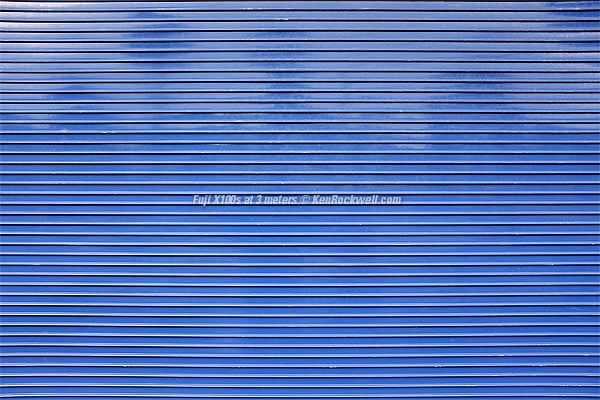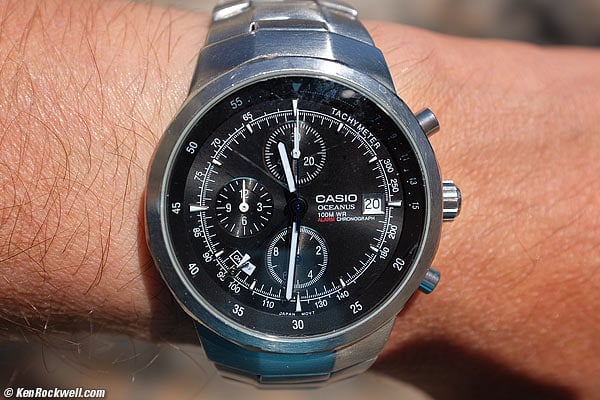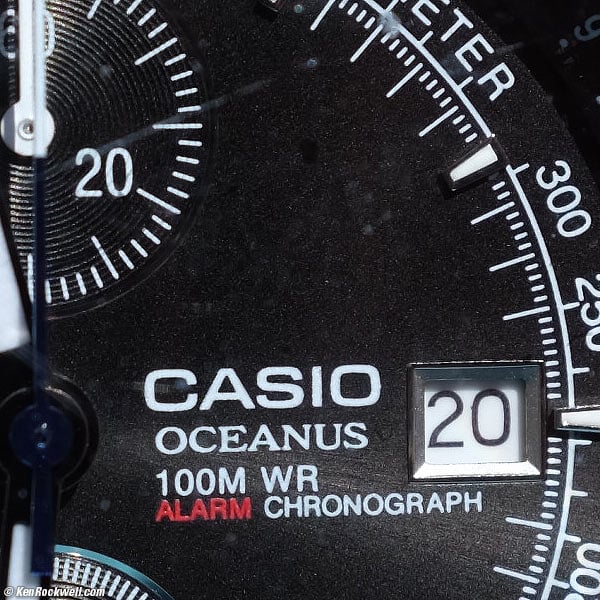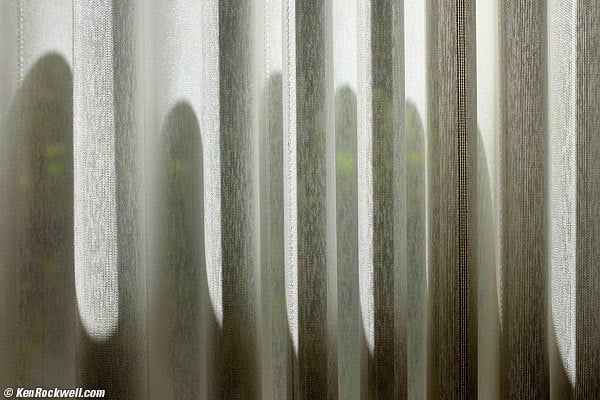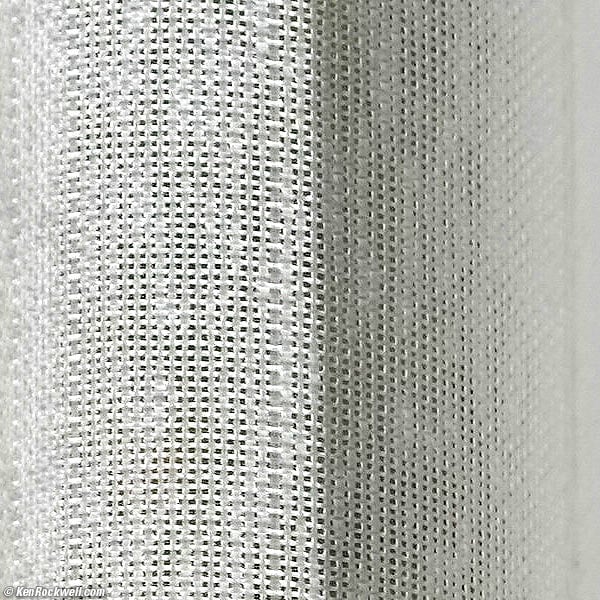Home Donate New Search Gallery Reviews How-To Books Links Workshops About Contact
Fuji X100S
23mm f/2 ASPH, 16MP DX Sensor
© 2014 KenRockwell.com. All rights reserved.
Intro Specifications Performance Compared
Recommendations Accessories More
Fujifilm X100S (15.7oz./445g with lens, battery and card, about $400 used if you know How to Win at eBay or at Amazon, also came in black). enlarge.
April 2019 More Fuji Reviews LEICA Reviews All Reviews
NEWEST: Fuji X100F (2017-) Replaces the X100T.
NEWER: Fuji X100T (2014-2017). Replaces this X100S.
Fuji X100S vs. Canon 5D Mark III 12 June 2014
LEICA M typ 240, LEICA M9, Fuji X100S and Nikon D600 Image Quality Comparison 11 March 2014
Central Coast Road Trip Sample Image Gallery 29 January 2014
Canon 5D Mark III vs. Fuji X100S image quality. X100S wins!
Why Fixed Lenses Take Better Pictures
My biggest source of support is when you use those or any of these links when you get anything, regardless of the country in which you live. It helps me keep adding to this free website when you get yours through these links — but I receive nothing for my efforts if you buy elsewhere. I use these places personally because they offer the best prices, selection and service. Thanks for your support! Ken.
Top, Fujifilm X100S. enlarge.
Back, Fujifilm X100S. enlarge.
Bottom, Fujifilm X100S. enlarge.
Sample Images
Central Coast Road Trip Sample Image Gallery 29 January 2014
Fuji X100S Film Simulation modes sample image files.
Here's a typical example of how it just does everything for me to make my snap look great:
Ryan at dinner at UTC, 19 November 2014. (Fuji X100S, flash ON, Auto Dynamic range 200%, f/2 at 1/125 at Auto ISO 2,500, Perfectly Clear V2.) bigger.
The Retro Dome, 19 January 2014, 1:49 PM. f/8 at 1/850 at ISO 200. bigger or Full-Resolution.
The Madonna Inn at Night, 20 January 2014, 5:54 PM. f/2 at 1/30 at ISO 1,200. bigger.
Madonna Inn Palms at Night, 20 January 2014, 5:59 PM. f/2 at 1/52 at ISO 6,400. bigger.
Alex Madonna's Steakhouse, 6:06 PM. Panoramic mode, f/2 at 1/125 at ISO 6,400. bigger or Much Bigger. The original is twice the dimensions of even the Much Bigger link!
McLintock's San Luis Obispo, 20 January 2014, 7:06 PM. panoramic mode, f/2 at 1/110 at ISO 5,000. bigger or Much larger (the original is twice the dimensions of even the bigger link!)
For this panorama, I tilted the X100S up so I saw more of what's up on the wall and less of people's feet. The X100S automatically corrects the image; you don't have to point the camera at the horizon. The X100S does the equivalent of what a shifting lens does on a view or traditional rotating-lens panoramic camera.
Hearst Castle Façade, 22 January 2014, 1:31 PM. f/6.4 at 1/900 at ISO 200. bigger or Full-Resolution.
Hearst Castle, 22 January 2014, 1:32 PM. f/8 at 1/900 at ISO 400. bigger or Camera-original © LARGE NORMAL JPG file.
Elephant Seals Lounging in the Sunset, Piedras Blancas, 22 January 2014, 5:18 PM. Tightly cropped from horizontal Fuji X100S shot, flash ON, f/5 at 1/140 at ISO 800.
Dada and Katie at the Elephant Seals, Piedras Blancas, 22 January 2014, 5:25 PM. Flash ON, f/4 at 1/140 at ISO 800. bigger.
Pointed and shot from arm's length: prefect exposure and flash-fill level, all automatic as I hold a wiggly kid.
The Leonis Adobe, 25 January 2014, 12:31 PM. f/5.6 at 1/900 at ISO 200. bigger.
June Lake Loop, 22 October 2013. f/11 at 1/180. bigger.
Whimsical Decorations, 22 October 2013. f/2 at 1/15 at ISO 800. bigger.
ISO 6,400: Christmas in Italy, 28 December 2013. Wide-open at f/2 at 1/58, Auto WB, Perfectly Clear. Full-resolution JPG, shot as SMALL NORMAL. Not only is the X100S super clean at ISO 6,400, it's also got fantastic bokeh, and even wide-open at f/2, ultra sharp as focused on the Christmas tree.
Katie at the park with her new friends, ten minutes after the sun went down, 09 August 2013. Fuji X100S SMALL NORMAL JPG, Program and Auto ISO and Auto Dynamic Range modes set f/2 at 1/125 at ISO 5,000, flash ON, Athentech Perfectly Clear plug-in. I didn't do anything special for this shot; I just pointed-and-shot my X100S at my default settings and it made this sunset and people look awesome! bigger or Full-resolution small JPG © file.
Typical snapshot, 15 July 2013, all made on AUTO: Katie hugs Ryan at Carl's Jr. (cropped from Fuji X100S SMALL NORMAL JPG, Program and Auto ISO and Auto Dynamic Range modes set f/5.6 at 1/125 at ISO 800, flash ON, Athentech Perfectly Clear plug-in.) bigger.
I get snapshots like this, all at the same settings on which I always leave my X100S, no fiddling required and everything on AUTO as usual:
This seems like any other snapshot, but what makes it so much better than other cameras is that the X100S weighs so much less than anything else, and with its ultrafast sync speed, easily balanced its built-in always-ready flash with full daylight. Ryan's face was in complete shadow, yet in this photo the X100S built-in flash perfectly balances the daylight, and the skin tones are flawless. My Nikon D800 lacks these skin tones, my 5D Mark III doesn't even have a built-in flash, and my LEICA M9 is clueless for fill-flash unless I do it manually - and its colors are hideous anyway — and none of these cameras has a sync speed anywhere near as fast as the X100S.
This shot was cropped from Fuji X100S SMALL NORMAL JPG, Program and Auto ISO and Auto Dynamic Range modes set f/6.4 at 1/800 at ISO 800, flash ON and synchronized at 1/800 for plenty of power in daylight, Athentech Perfectly Clear plug-in.
Big deal, the X100S knocks these shots out all day so I'm used to it. What always impresses me is how my X100S unflappably masters any crazy light I can throw at it, like this:
Lycopodium Powder and a blowtorch! hotter.
This wasn't a flame: it was flash powder. The flames lasted only a fraction of a second. A DSLR or LEICA probably would have totally screwed up the exposure as the light changed so fast, but with the X100S, POW!, always perfect photos.
(cropped from Fuji X100S SMALL NORMAL JPG, Program and Auto ISO and Auto Dynamic Range modes set f/4.5 at 1/125 at ISO 400, flash off.)
Also since the X100S is so ultrasharp even at small files sizes, it makes transfer and processing of all my files so much faster than with other cameras.
Instead of trying to wow potential buyers with BS features that no one would figure out anyway, the X100S instead is designed to impress the heck out of those like me who actually own it.
Dads and Doughnuts, 13 May 2013. bigger. (Fuji X100S, +2 color, Auto ISO 200, f/3.6 at 1/150, flash ON, Perfectly Clear plug-in to Photoshop CS6.)
ISO 20,000!
Pushed to ISO 20,000 and lit by one small candle: Ryan and Dada at an early birthday celebration for Dada at Mangia Bene, 28 December 2013. (Fuji X100S pushed to ISO 20,000, f/2 at 1/45, Perfectly Clear.) bigger.
Not a great shot, but not bad for total darkness when handed to my wife to snap. I pushed the ISO in Photoshop CS6.
Full-Resolution Sample Image Files
Lake Arrowhead, 22 July 2013. X100S, Program, Auto Dynamic Range and AUTO ISO chose f/5 at 1/140 at ISO 200, +2 saturation, Perfectly Clear plug-in to Photoshop CS6. © full-resolution file from LARGE NORMAL JPG.
Lake Arrowhead, 22 July 2013. X100S, Program, Auto Dynamic Range and AUTO ISO chose f/5.6 at 1/680 at ISO 800, built-in flash ON to fill foreground, +2 saturation, Perfectly Clear plug-in to Photoshop CS6. © full-resolution file from LARGE NORMAL JPG.
30-second night exposure, Lake Arrowhead, 8:34 PM, 22 July 2013. X100S rested on a table, f/5.6 at 30 seconds at ISO 2 set manually, no flash, +2 saturation, Perfectly Clear plug-in to Photoshop CS6. © full-resolution file from LARGE NORMAL JPG.
Hand-held wide-open at f/2, Lake Arrowhead Village, 8:29 PM, 23 July 2013. X100S rested on a railing hand-held, f/2 at 1.3 seconds, AUTO ISO chose ISO 250, +1 stop exposure compensation, +2 saturation, Perfectly Clear plug-in to Photoshop CS6. © camera-original unprocessed LARGE NORMAL JPG file.
Sharp Seafaring. X100S, ISO 200, f/5 at 1/150, standard saturation. © original NORMAL MEDIUM (8MP M 3:2 N) file.
Great people color and fill-flash balance: Dada and Ryan snapped by Dad on the Safari ride, 22 April 2013, Monday. Fuji X100S, Flash ON, Auto ISO 400, Auto DR, 1/200 at f/5.6, standard saturation. © camera-original MEDIUM NORMAL JPG (M 3:2 N) file.
Introduction top
|
I buy only from these approved sources. I can't vouch for ads below. |
Intro Specifications Performance Compared
Recommendations Accessories More
The Fuji X100S lets me make better-looking images faster and with less hassle than with any other digital camera. The X100S' dual optical and OLED finder are not exceeded by any other camera. Likewise, no other camera can render better skin tones or balance its flash better with any sort of crazy real-world available light from daylight to moonlight than can the Fuji X100S. I prefer my X100S to Fuji's interchangeable-lens versions, since the extraordinary lens of the X100S is the only one I need, and the X100S weighs less and tends to perform even better and more quietly, for less money, than those larger and clunkier cameras. My X100S is so well made and so advanced that it make my LEICA M9 feel 60 years old, which much of its technology is — and my people photos from my X100S look so much better!
There's nothing better than a Fuji X100S for people photos. You can pay a lot more, but there is nothing better for real-world image quality when life won't give you the do-overs you need to get a DSLR or LEICA dialed-in.
The Fuji X100S gets everything right. It doesn't pervert what a real camera should be like most offerings from volume camera makers like Nikon, Canon and LEICA who've spent decades getting further and further from what makes a camera great, all in the name of selling more cameras cheaper. Heck, only LEICA today still uses a real cable release socket — too bad LEICAs or LEICA Ms still can't autofocus or do automatic fill-flash 25 years later. With the X100 and X100S, Fuji set out to make a camera as it ought to be, and they've gotten it oh so right.
It's all about the picture, not about bogus sales features. The X100S has no BS HDR modes, yet its Voodoo sensor and electronics let it render insane dynamic ranges naturally and instantly, and its built-in flash is always perfect — and never needing to pop up or wait to recycle or any of the other hogwash that other camera makers spray out to get between us and a good picture. All the other baloney helps sell cameras to non-pro photographers, while the X100S is as perfect as any digital camera this side of the iPhone 5 has ever gotten.
For travel, vacation and most uses, the X100S is the best there is. That's why it's so hard to buy one, just as it was with the X100 for a while. How to get one.
The X100S is a newer version of the superb Fuji X100, which I bought back in 2011 and have used ever since as my primary camera when shooting family and candid photos in available light. No DSLR or LEICA can match the X100S' uncanny ability to match its built-in fill-flash to ambient light for natural results. The X100 also has better ability to pull great color, exposure and auto white balance out of any crazy lighting situation, and nail it all dead-on on the first shot with no twiddling, than any other camera I've used.
The X100S is the same as the X100, which was already the world's best available-light camera, and adds more resolution to the electronic viewfinder, more pixels to the image sensor, faster electronics so everything works faster, a faster AF system and a stereo mic for you vidiots. The fast f/2 lens, is unchanged from the X100 — because it is already perfect.
A new "Q - Quick Menu" system from Fuji's other cameras helps makes settings faster.
The AF mode switch is improved, since Fuji finally figured out to put the useless AF-C mode in the middle, so it's easy to slide all the way between M and AF-S in one stroke without taking your eye from the finder.
Fuji claims cleaner high ISOs by one stop, and that seems about right — and the original X100 was already the cleanest 1.5x (DX) sensored camera I owned. The X100S now will let you set AUTO ISO to grab as high as ISO 6,400, which is more than enough for anything reasonable; heck, I can snap constellations in the night sky hand-held with the X100S.
Close-focus distance in the regular AF mode now gets a close as 0.21 meters, from 0.4 meters in the X100. This is another big little improvement; I often had to mess with setting the MACRO mode on my X100. This comes as a benefit of faster autofocus; the X100 and X100S limit the close-focus distance in the regular mode based on how long is reasonable for the camera to have to rack the lens all the way in and out between infinity and close-focus distance, so the X100S' faster autofocus allows a closer minimum autofocus distance in the regular AF modes.
The X100S now adds stainless-steel inserts in the strap lugs.
The X100S' lens is fixed, never needing to extend or retract; it's always ready to shoot.
Fluff
The X100S also adds what Fuji calls a "Digital Split Image Display" for manual focusing, as well as a focus peaking display. The manual focus ring barely works on the X100, so I presume it's not that great on the X100S either, regardless of the fancy displays. No worries; no one actually uses the manual focus ring. For manual focus, select MF with the slide switch, then just tap the rear AFL-AEL button to spot-focus. You don't need to hold it; one tap and the X100S does the rest! It's just like the smart ignition switches on better cars: one short tap and the car starts itself without having to hold it.
Fuji claims a new Lens Optimizer that corrects for softness due to diffraction at smaller apertures.
New is a total exposures counter, found in the menu system. Now people dumb enough to buy at retail will know how many "test shots" have been fired at the sales counter by strangers before they bought what they thought was a "new" camera.
The battery hole is now more restrictive, so there are fewer wrong ways to insert the battery.
Specifications top
Intro Specifications Performance Compared
Recommendations Accessories More
See my exhaustive Fuji X100 Specifications for most of the details. Here's some of what's significant about the X100S in particular:
16.3 million pixels APS-C X-Trans CMOS II sensor
L: (3:2) 4,896 x 3,264 / (16:9) 4,896 x 2,760 / (1:1) 3,264 x 3,264
M: (3:2) 3,456 x 2,304 / (16:9) 3,456 x 1,944 / (1:1) 2,304 x 2,304
S: (3:2) 2,496 x 1,664 / (16:9) 2,496 x 1,408 / (1:1) 1,664 x 1,664
Panoramic swept images: 9,600 x 2,160 pixels (21 MP).
EXR Processor II
Hybrid Viewfinder (OVF / EVF)
FUJINON 23mm F2 ASPH lens
Intelligent Hybrid AF (with the world's claimed fastest AF speed of 0.08 sec.)
Start-up time: 500 ms.
Shutter delay: 10 ms.
Minimum interval between shots: 500 ms.
High-contrast and wide viewing-angle 2.8-inch Premium Clear LCD (460K dots)
Super Intelligent Flash
Burst shooting rate of up to 6 FPS at full resolution (31 frame buffer)
Focus Peaking
"Digital Split Image" display
Artistic filters – yawn.
1080/60p and 1080/30p video with built-in stereo mic.
NP-95 Li-ion battery
126.5 x 74.4 x 53.9mm / 5.0 x 2.9 x 2.1in (Minimum thickness: 31.0mm / 1.2in.)
15.7 oz. (445g) with battery and memory card.
Announced
07 January 2013
Price
About $400 used if you know How to Win at eBay or at Amazon, April 2019.
$1,300, Jan 2013 ~ Dec 2014.
$1,300 in black, January 2014-.
Performance top
Intro Specifications Performance Compared
Recommendations Accessories More
See also my exhaustive Fuji X100 Review. The X100S is much the same thing, with only minor changes, as well as more pixels and more speed.
The X100S almost always nails perfect color and tone in every shot, on the first try. In these samples, I simply handed my X100S to my wife, and she had at it. Even at its default settings, I get a far higher number of keepers compared to my fussy DSLRs and LEICAs.
Not only are color and tone perfect even when handed to a non-photographer, set to its auto-AF-area select mode, the non-photographer (or self-portraits at arm's length) always seem to be in perfect focus, too.
It's better than the LEICA M 240; see LEICA M240, LEICA M9, Fuji X100S and Nikon D600 Image Quality Comparison.
Color and Tone
Dada and Ryan snapped by Mom, 23 April 2013. Fuji X100S, Flash ON, Auto ISO 400, Auto DR, f/2 at 1/125, standard saturation, cropped from vertical. bigger.
Dada and Ryan. Fuji X100S, Flash ON, Auto ISO 400, Auto DR, f/2 at 1/125, standard saturation. bigger.
Sharpness
Oh man, is it sharp! These samples are from NORMAL JPG files, not RAW and not Fine JPG files:
Fabric. X100S, ISO 200, f/8 at 1/480. © camera-original LARGE NORMAL (L 3:2 N) JPG.
Crop from above 16MP image at 100%. © camera-original LARGE NORMAL (L 3:2 N) JPG. If this is 6" (15cm) on your screen, the entire image would print at 50 x 33 inches (125 x 85 cm) at this same magnification.
Valves. X100S, Auto ISO 200, f/5.6 at 1/340, +2 color. © camera-original Large (16MP) JPG file.
Also note the complete lack of any visible distortion above.
Sharp enough for you? 5355 at 16 MP. X100S, ISO 200, f/5.6 at 1/680, +2 saturation. © full-resolution NORMAL LARGE (16MP L 3:2 N) file. (run through Perfectly Clear at defaults.)
Fuji uses triple-voodoo to do this:
1.) Ultra sharp fixed 23mm f/2 aspherical lens.
2.) Sensor uses a bizarre color filter matrix that dispenses with the need for an anti-alias filter.
3.) Fuji's in-camera processing retains the full sharpness of the raw data; no need to have to shoot raw for full sharpness.
High ISOs
High ISOs look great, even compared to full-frame cameras. Fuji uses very different sensors and DSP than everyone else, and whatever magic juju they're using is working. High ISOs are sharp, clean and colorful:
Red Pipes. X100S, Auto ISO 6,400, f/2 at 1/38, +2 color. © camera-original Medium Normal JPG file.
Katie at Benihana. (Fuji X100S, +2 color, ISO 6,400, f/2 at 1/125, no flash, Athentech Perfectly Clear plug-in.)
Look good, clean and sharp? Did the X100S handle the dark subject and not blow-out the zillion-times brighter bushes outdoors through the windows? Well, it's all this, and it was cropped and then blown-up from the center of this SMALL NORMAL JPG file!
Complete image from which above was cropped. © camera-original Medium Small (4MP) JPG file.
ISO 5,000 at 1/125 and f/2, flash ON, Athentech Perfectly Clear plug-in. I didn't do anything special for this shot; I just pointed-and-shot my X100S at my default settings and it made this sunset and people look awesome! bigger or Full-resolution small JPG © file.
Bokeh
The X100S' 23mm f/2 ASPH's bokeh is beautiful! Out-of-focus backgrounds just melt away like chocolate; the Fujinon's bokeh is so much better than the nasty bokeh of the LEICA SUMMICRON-M 35mm f/2 ASPH:
Ryan is not easily amused. X100S, Auto ISO 1,250, f/2 at 1/125, +2 color. bigger. © camera-original Medium Normal JPG file.
Katie makes a Pac-Man out of a PopChip at her art table. (Fuji X100S, +2 color, ISO 800, f/2 at 1/150, no flash.) bigger.
Highlight and Shadow
The Fuji X100S not only is sharp, but look how it effortlessly handles huge ranges from light to dark, and it is doing all this in my default settings with built-in flash and AUTO Dynamic Range. These shots are simply point-and-shoot with no twiddling or special modes needed:
Ryan at the diner with Pops. (Fuji X100S, Flash ON, Auto ISO 800, Auto DR, 1/125 at f/4, +2 color.) bigger.
If this was shot on any other brand, something would have been over or underexposed and lost. The X100S nails this difficult lighting on every shot.
Fuji moves into the LEICAMAN's home; Auf Wiedersehen, LEICA! X100S, ISO 400, Auto DR, +2 color, f/4 at 1/125. © camera-original 16MP LARGE NORMAL JPG.
Likewise, I don't know of any other camera that can balance natural fill-flash and recover all the highlights like this, and do it all automatically.
Sharp? Crop from above 16MP image at 100%. © camera-original 16MP LARGE NORMAL JPG. If this is 6" (15cm) on your screen, the entire image would print at 50 x 33 inches (125 x 85 cm) at this same magnification.
What's really impressive is if you're used to trying to shoot these sorts of heavily-backlit scenes on film or other digital cameras; it never looks this good even after a load of fiddling. With my X100S, I point-and-shoot, and get these perfectly natural images. Whoo hoo!
Katie washes Stomper's windshield. (Fuji X100S, +2 color, Auto ISO 400, Auto Dynamic Range, f/5.6 at 1/640, flash ON, Athentech Perfectly Clear plug-in.) bigger.
Built-in Flash
The built-in flash is better than others because it's always ready to fire. It never needs to pop-up or is subject to breaking-off; it's integrated in the body.
There's never a problem with red-eye because it's never so bright that it excites red-eye. The only way to see red-eye might be to strong-arm the X100S to the wrong settings, and force it to ISO 200 in dim light at a fast shutter to eliminate all ambient light from the exposure, and shoot at close range. As I shoot, using the flash as fill and letting the X100S set the ISO and Dynamic Range, it's always flawless.
The built-in flash is perfect. It balances with whatever light there is, from daylight to moonlight, perfectly, and always on the first shot without ever needing any twiddling. It's far better than compact or DSLR flashes, some of which can do some of this well, but none of which can balance well in all light. I never have to fiddle with the flash level; it's always dead-on in every light, and never overpowers the subject.
Katie washes Stomper's windshield. (Fuji X100S, +2 color, Auto ISO 800, Auto Dynamic Range, f/8 at 1/850, flash ON, Athentech Perfectly Clear plug-in.) bigger.
See Katie? Without the flash shot into the sun here, she'd only be a shadow. The flash lit her, and lit her without looking like a flash was used.
Distortion
Distortion is invisible.
For scientific use, it's complex and will require advanced tools to correct completely.
Aluminum wall. X100S, Auto ISO 200, f/4.5 at 1/140, +2 color. bigger.
Here's how close it gets:
Rockwell's watch, 20 April 2013. Fuji X100S, ISO 200, f/5.6 at 1/850. © camera-original Medium Normal JPG file.
And here is how sharp it is:
Crop from above Medium Normal JPG (8MP, M 3:2 N) at 100%. If this is 6" wide on your screen, the complete image would print at 24 x 36 inches (60 x 90 cm) at this magnification. © camera-original Medium Normal JPG file.
Macro performance is excellent! It gets super-close, and it's super-sharp while doing it.
Notice how shallow is the depth-of-field; the hands and watch crystal are way out of focus, but the watch face is so sharp that it clearly shows the face's surface texture and fine milling, even on the flat parts!
I don't bother with the special Macro mode; it seems to work just as well with out bothering to switch into it.
At f/2 at macro distances there is some veiling (haziness) from spherical aberration. It goes away stopped down (like to f/4).
Fabric, Ghent, Belgium. This was only a few inches across as part of a much larger window covering, The fibers were too small to see with the naked eye. I didn't even need the "macro" mode; it gets this close in the regular range. ISO 200, f/8 at 1/200, no flash. full-resolution. ISO 200, f/8 at 1/200, no flash.
Crop from top left corner of above Large Normal JPG (16MP, M 3:2 N) at 100%. If this is 6" wide on your screen, the complete image would print at 50 x 32 inches (125 x 85 cm) at this magnification. © full resolution Large Normal JPG file.
Spherochromatism
There is no significant spherochromatism. Also mislabeled "color bokeh" by laymen, the Fujinon 23mm f/2 ASPH doesn't add colored fringes to out-of-focus highlights:
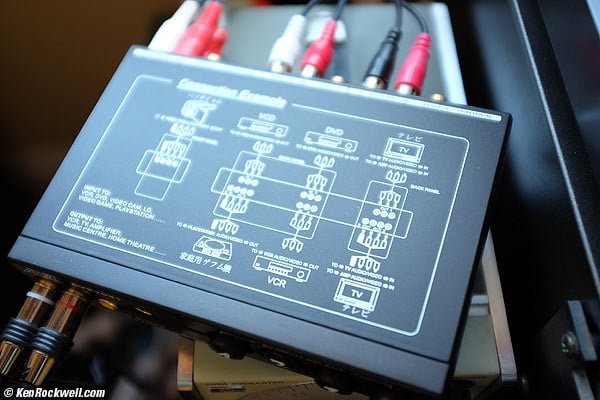
A/V Selector, 17 April 2013. Fuji X100S, ISO 200, f/2 at 1/30.
At macro distances at f/2, there is some veiling from spherical aberration, but no spherochromatism.
Zoom Lens
Fixed lenses take better pictures than zooms, which is why pros favor fast fixed lenses like the one on the X100S. Zoom lenses are mostly a crutch for selling to uncreative amateurs who don't know how to zoom with their feet.
Even if you can't zoom with your feet, no problem. The X100S has so much sharpness and resolution that it's trivial to crop the image to the equivalent of a 105mm lens and still have more than enough resolution for anything.
If you want wide, no problem again: just use the swept panorama mode, which gives 180º 21 MP images with less distortion and therefore more resolution than any fisheye on a DSLR!
Data
Normal JPG 3:2 images are about 4.2 MB LARGE (16 MP), 2.1 MB MEDIUM (8 MP) and 1.1 MB SMALL (4 MP).
The good news is that the default DPI is set to 72.
The bad news is that Fuji still doesn't title cards when it formats them; they remain as "Untitled."
The new Shutter Counter is grossly inaccurate. Mine read 700 with only 388 frames actually shot. It started correctly at zero, but additionally counts other things like power cycles and so forth, so Fuji hasn't yet worked this one out.
When I got rid of my X100S in January 2015, (because my X100T arrived), I had made 3,294 shots with it — but the counter read 18,500!
Compared top
Intro Specifications Performance Compared
Recommendations Accessories More
My comparisons are on on my Fuji X-T1 review.
Recommendations top
Intro Specifications Performance Compared
Recommendations Accessories More
The X100S is the world's best digital camera for travel, family and candid photography. It is so much better handling and gives far better images under a far broader range of conditions than any DSLR, mirrorless, compact or even LEICA camera. There is no contest, the X100S wins.
The X100S, complete with a superb lens and flash, sells for half the price of a lensless full-frame DSLR, which most of the people reading this site buy every other month as they are introduced. This Fuji is a masterpiece, and much better made than a $3,000 DSLR, for a fraction of the price. If you're thinking about it, just get an X100S. I did!
If you already own the X100, there's no need to go buy the X100S unless you want more speed. It's essentially the same thing, with many things fine-tuned or fixed from the original flawed X100 design. The original X100, while loaded with idiotic design flaws like a battery that goes in four ways (three of them the wrong way), is still such a superior camera that it sings even with all its flaws, and now the X100S rectifies many of the flaws that the X100 never should have had in the first place — like resetting all your menu selections every time you update the firmware.
If you use your X100 all the time as I do, it's a no-brainer that you'll love the new X100S as much as I do simply because of the nicer electronic finder and everything running faster. See also Is It Worth It. There are so many small to moderate improvements, like the better AF switch and closer real-world focusing without needing the macro mode, that makes the X100S is a gotta-have for those of us who shoot it all the time.
I don't own any of the other interchangeable-lens Fujis anymore; they serve no real purpose when the X100, and now X100S, do what the other Fujis do, but better. The X100S is simpler and has a built-in flash and all the lenses you need already built in with no need for twiddling.
Bravo!
My biggest source of support is when you use these links, especially these directly to it at Adorama where I got this one, or at Amazon, when you get anything, regardless of the country in which you live. It helps me keep adding to this free website when you get yours through these links — but I receive nothing for my efforts if you buy elsewhere. Thanks for your support! Ken.
Accessories top
Intro Specifications Performance Compared
Recommendations Accessories More
Hoods
I'd not use any hood; it doesn't do much, makes the camera longer and blocks the flash and finder.
The lens has no problem with flare, so I don't use any hood.
Filters
My Hoya HD2 UV 49mm filter for my Fuji X100S is fantastic. Not only have I had no problem with ghosts, it really doesn't get dirty. Even if I put my thumb on it, no fingerprints stick!
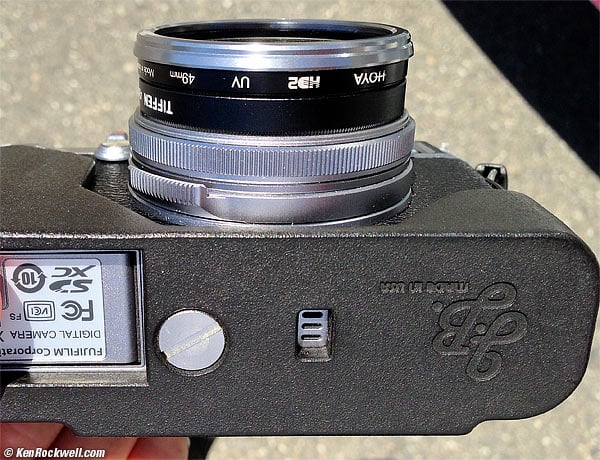
Fuji X100S Hoya HD2 UV 49mm filter and JB Camera Designs half case.
I use a Tiffen 49mm UV filter from which I unscrewed the retaining ring and took out the glass as a filter adapter. I remove the X100S' front trim ring, screw the empty 49mm Tiffen filter ring on backwards, screw my 49mm Hoya HD2 UV or other filter on top of the empty ring backwards, and replace the X100S' silver trim ring back on the reversed filter. The filter might fit without the empty ring, but the empty ring is used as a spacer to allow the lens move forward to focus at macro distances.
Not everyone wants to use or has an empty 49mm Tiffen filter as an adapter ring, so I took two for the team and bought one of the JJC Fuji X100S Filter Adapter (silver, $15) and one of the EZPhoto X100S Adapter (black, $9). Each is a filter adapter that lets you use filters mounted properly, and a hood, and each is all metal. (Forget paying $80 for Fuji's equivalent LH-X100, I doubt it's any nicer than the $15 JJC.)
The $15 JJC Fuji X100S Filter Adapter is swell. It's well made, dull black on the inside and silver on the outside to sort of match the X100S (all these adapters work on both the X100 and the X100S). This adapter is well machined and works fine.
The $9 EZPhoto X100S Adapter feels like junk by comparison. While the $15 JJC Adapter comes in a nice box, the $9 EZPhoto Adapter comes in a plain white box, and is all black, not matching the camera. Worst, the EZPhoto Adapter feels rougher and grittier, especially when attaching either the filter adapter to the camera or the hood to the filter adapter.
Each works as well and is all metal and the same size and shape, but the hoods don't quite interchange between them. The filter adapters are useful for anyone lacking a spare empty 49mm filter ring, and each of the hoods bayonets the same way.
Strap
I use the genuine MADE IN GERMANY LEICA strap. It's perfect for cameras this size. I leave Fuji's strap in the box for resale time. Sure, the German LEICA strap costs more than $2, but you'll be using it long after you've forgotten about the X300 in 2018.
Grips and Cases
I use the JB Camera Designs Made-in-USA half case. It protects the camera and has holes for the battery, SD card and speaker. My JB case won't come off until I get another camera. (The $130 Fuji case may be nice, too.)
Batteries
I'm still using the cheap no-name NP-95 batteries I bought over eBay 2 years ago. They only cost me a few dollars for a set of two with a crappy charger. I've never used the crappy AC/DC charger, and the batteries only have about 2/3 the capacity of the real Fuji NP-95, bit so what: for $10 they work great, and have lasted two years with no degradation. I always carry a spare in my pocket; Fuji's battery meter is of little help. Off brand spares like this should also work fine.
External Flash
I use no external flash. Why would I want to crap-up my camera with more junk I don't need? The built in flash is flawless.
Accessory Lenses
I certainly use no WCL-X100 accessory lens. Why would I want to crap-up my brilliantly simple camera with more junk I don't need just to get the equivalent of a 28mm lens — which is essentially the same thing as the 35mm lens? Geeze, what are some people thinking? Worse, messing with and carrying that thing would make no sense and would block the optical finder.
Tripods
I use no tripods. They went out with Kodachrome 200 back in 1986.
Screen protectors
Feel free to use any generic peel-and-stick screen protector you cut to size if you feel compelled.
This is purely optional; all they do is make the tiny LCD less clear, and you have to realize that digital cameras are disposable. In a year or two I'll trash my X100S in favor of an X150 or X200 or whatever, and my LCD isn't getting scratched anyway. Fuji uses good plastic. (Turns out the X100T came out 12 months later and my X100S is long gone.)
More Information top
Intro Specifications Performance Compared
Recommendations Accessories More
© Ken Rockwell. All rights reserved. Tous droits réservés.
Help me help you top
I support my growing family through this website, as crazy as it might seem.
The biggest help is when you use any of these links when you get anything, regardless of the country in which you live. It costs you nothing, and is this site's, and thus my family's, biggest source of support. These places have the best prices and service, which is why I've used them since before this website existed. I recommend them all personally.
If you find this page as helpful as a book you might have had to buy or a workshop you may have had to take, feel free to help me continue helping everyone.
If you've gotten your gear through one of my links or helped otherwise, you're family. It's great people like you who allow me to keep adding to this site full-time. Thanks!
If you haven't helped yet, please do, and consider helping me with a gift of $5.00.
As this page is copyrighted and formally registered, it is unlawful to make copies, especially in the form of printouts for personal use. If you wish to make a printout for personal use, you are granted one-time permission only if you PayPal me $5.00 per printout or part thereof. Thank you!
Thanks for reading!
Mr. & Mrs. Ken Rockwell, Ryan and Katie.
Home Donate New Search Gallery Reviews How-To Books Links Workshops About Contact

